This Khiva to Aral Sea road trip starts in the enchanting city of Khiva, where the ancient walls whisper tales of history. Driving north to Muynak will place you at the threshold of a post-apocalyptic world, a desert graveyard of marooned ships.
I’ve journeyed this Khiva to Aral Sea route, visiting all the diverse places covered in this article to put together this essential guide to help future travellers.
The most popular day trips from Khiva to the Aral Sea are completed in one or two days. I joined a one-day Aral sea tour starting from Khiva.
Having already visited the famous historical cities of Tashkent, Samarkand, Bukhara and Khiva, this Aral Sea tour would be the final quest in our Uzbekistan travels.
⛴️ Khiva to the Aral Sea in a Nutshell
Starting Point: The journey begins in the historically rich city of Khiva, known for its UNESCO-listed inner-walled city.
Destination: The trip concludes at the evocative Aral Sea Ship Graveyard in Muynak, reflecting the severe environmental degradation experienced in the region.
Key Stops (Variable):
- Chilpik Kala: This Zoroastrian tower of silence offers views of the Amu Darya River, but it may not be included in all tours.
- Savitsky Art Museum in Nukus: This museum features an extensive collection of Russian avant-garde art; some tours may only visit one of its buildings.
- Mizdakhan Necropolis: This sprawling ancient cemetery gives a thorough insight into local history. Depending on the tour, it may be replaced by other local sites.
- Muynak Aral Sea Monument: Marks the former coastline of the Aral Sea, serving as a poignant reminder of ecological change.
Tour Duration and Options:
- One-day tours: Common but can be rushed; ideal for those with limited time.
- Two-day options: Allow for a more thorough exploration and the possibility to customize stops, ensuring you can visit your preferred sites.
- Self-Drive Option: Offers the ultimate flexibility, letting you control the itinerary and explore Uzbekistan’s dramatic landscapes and historical landmarks at your own pace.
Travel Tips:
- Be prepared for significant driving times across diverse terrains. A 4×4 is not required.
- Early departures are typical to maximize daylight hours.
Recommended Gear:
- Sturdy walking shoes and clothing that is suitable for both desert climates and cooler mornings.
- Bring a camera to capture the dramatic landscapes and historical sites.
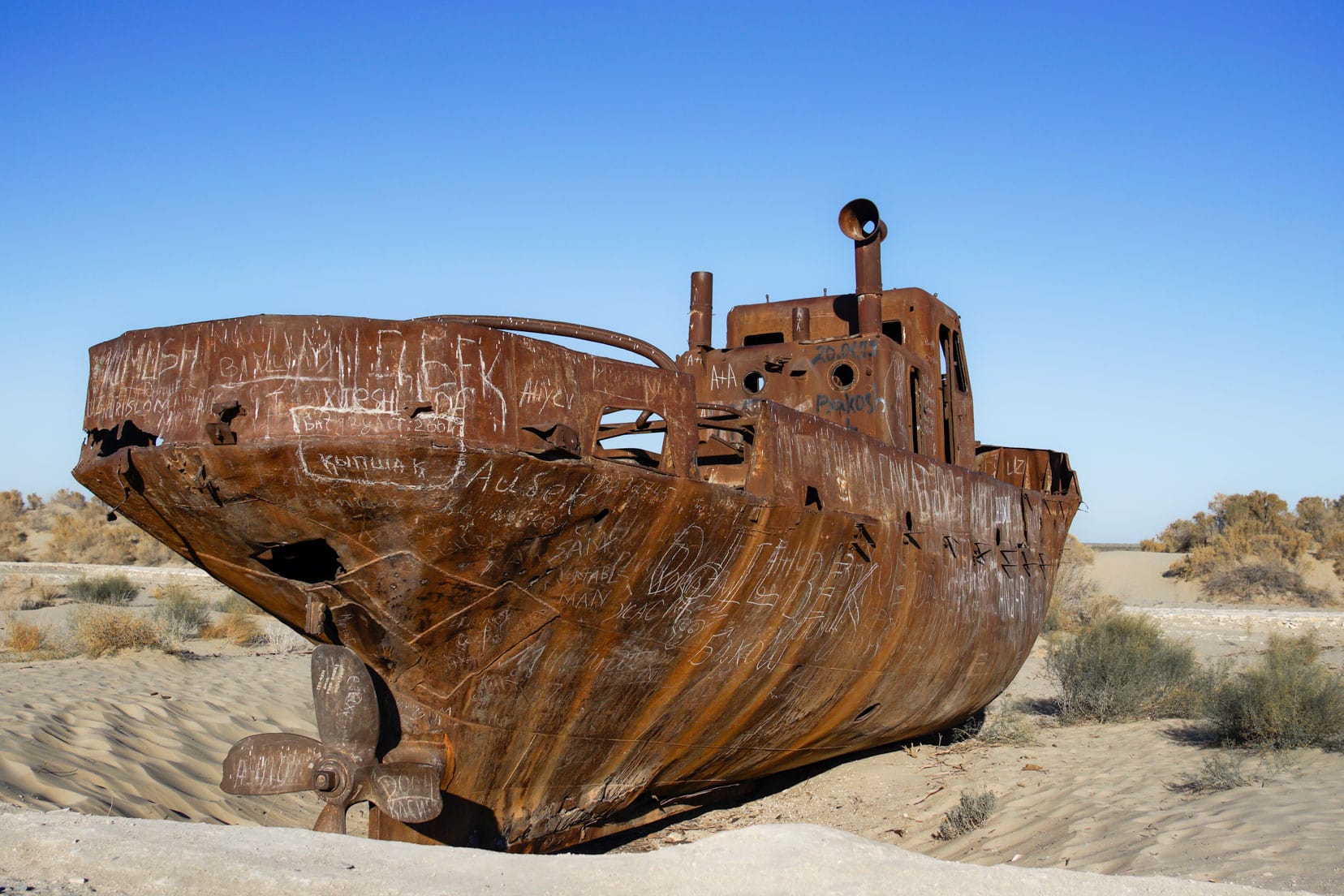
Driving Times and Distances Between Key Stops: Khiva to Aral Sea
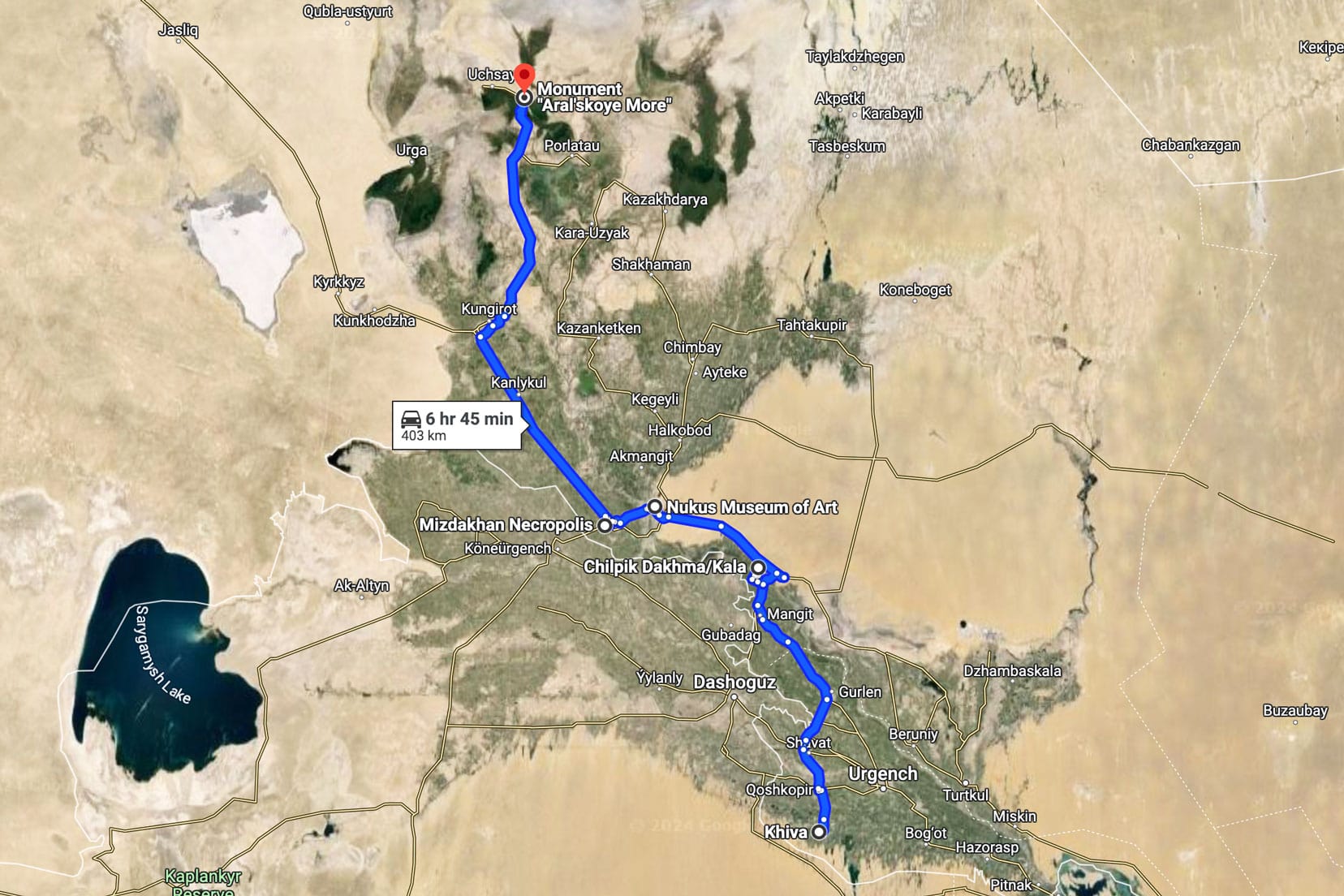
- Khiva > Chylpik Kala: 120 km (approx 2 hours 15 mins)
- Chylpik Kala > Savitsky Art Museum, Nukus: 77 km (approx 1 hour 15 mins)
- Savitsky Art Museum, Nukus > Aral Sea Ship Cemetery: 211 km (approx 3 hours)
- Aral Sea Ship Cemetery > Khiva: 180 km (3 hours)
Jump Ahead: What’s Included In This Article
Map: Key Stops from Khiva to the Aral Sea Ship Cemetery
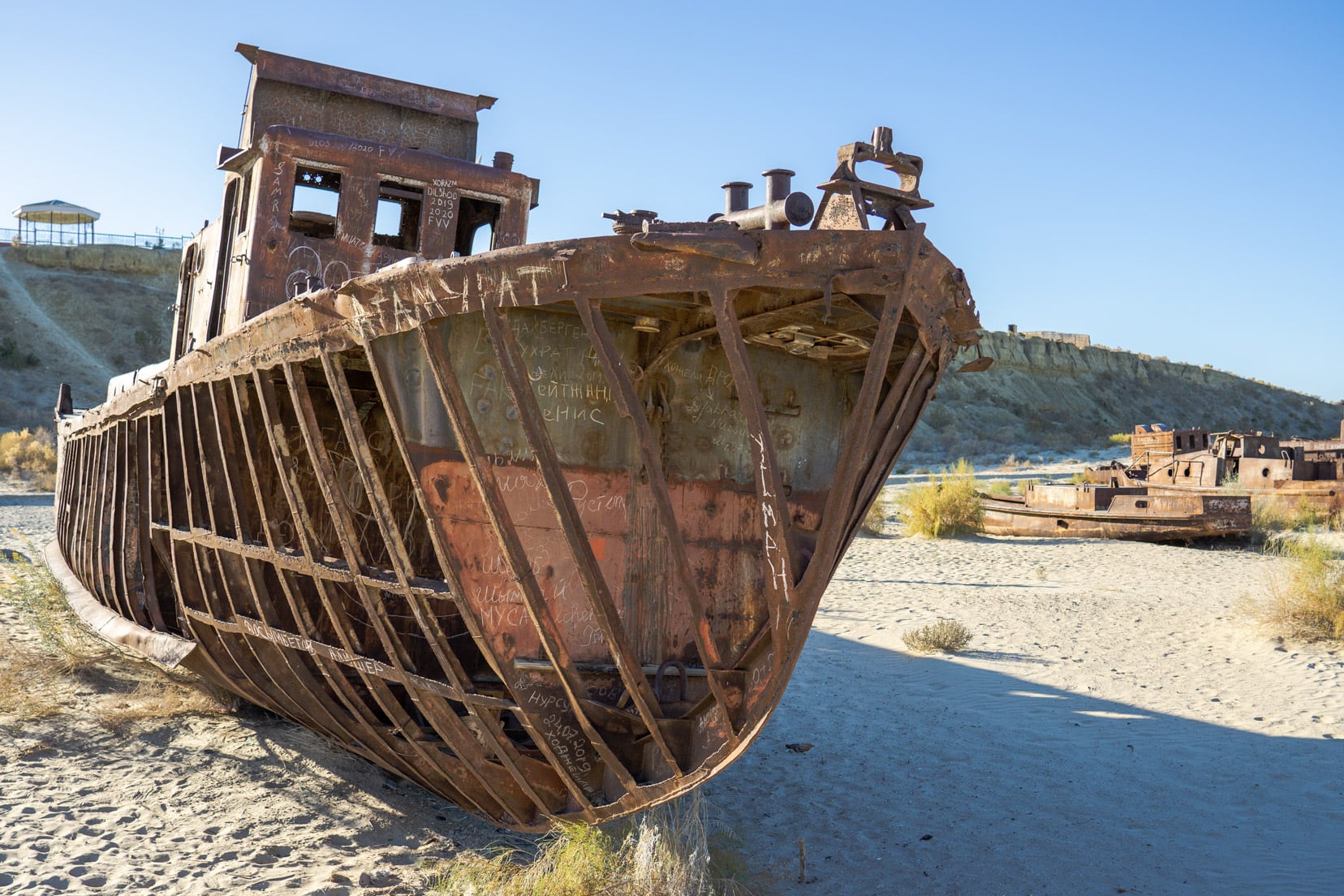
Planning a Trip to Uzbekistan?
- 🚗 Hiring a car? We recommend getting a quote from DiscoverCars
- 🚐 Hiring a campervan? We recommend Motorhome Republic
- ⛑ Arranged your travel insurance? Compare quotes from World Nomads & Safetywing
- 🪪 Order your International Driver’s Licence online here
- 🏩 Booked your accommodation? We use Booking.com to find the best deals
- 🐾 Is someone pet-sitting for you? 🐾 We use and love TrustedHousesitters
- (Get 25% off at checkout for new memberships with our discount code: LIFEJOURNEY25)
Need modern-day travel tips? Read up on our
Practical Uzbekistan Travel Tips and Guide
Khiva to Aral Sea Ship Cemetery: Trip Options
The eerie allure of a ghostly ship graveyard brimming with mystery and intrigue beckoned me for an adventure to see these vessels’ fate with my own eyes.
Located just 370 kilometres from Khiva, the Aral Sea ship graveyard is accessible by self-driving, public transportation, or joining a tour.
Self-Drive: Khiva to Aral Sea
Driving yourself is entirely feasible. A standard sedan suffices; a 4×4 is not necessary. However, be prepared for a long drive if you’re planning just a day trip.
For those with more time, a two-day self-drive itinerary is recommended, allowing you to experience the sunset and sunrise over the ship cemetery—a truly special sight.
Consider staying at the highly-rated Dilbar Guest House in Muynak (a 4.8/5 rating).
Car Rental:
If you’re looking to hire a car, DiscoverCars offers a Price Match Guarantee, a 4.5 rating on Trustpilot, and free cancellation. 🚘 Grab a great quote here.
Public Transport: Khiva to Aral Sea
The most budget-friendly option involves using minivans and taxis.
While I opted for a tour and thus have limited direct experience with public transport, other travellers suggest it’s doable but with many transport connections involved.
For more detailed information, contact Islambek Travel (see map) in Khiva, which serves as a tour operator and an information center.
Join A Tour
I chose a private one-day tour for a fully immersive experience, which included several stops not typically covered in standard tours, such as Mizdakhan and Badai Tugai, although we were unable to visit the latter due to time constraints.
This one-day tour is perfect if you are tight on time but want to see the highlights, which include:
- Chylpik Kala
- Savitsky Art Museum,
- Muynak Museum and the
- Aral Sea Ship Cemetery.
Tour Features: Includes hotel pickup/drop-off, transportation, guide, and full refund if cancelled up to 24 hours in advance. Museum entry fees and meals are extra.


One-Day Aral Sea Ship Cemetery Tour from Khiva
⭐️ I recommend this full-day tour from Khiva to Muynak and Aral Sea Ship Graveyard ⭐️
(Includes: hotel pickup/drop-off; driver, sedan car, fuel and guide; full refund if cancelled up to 24 hours in advance)
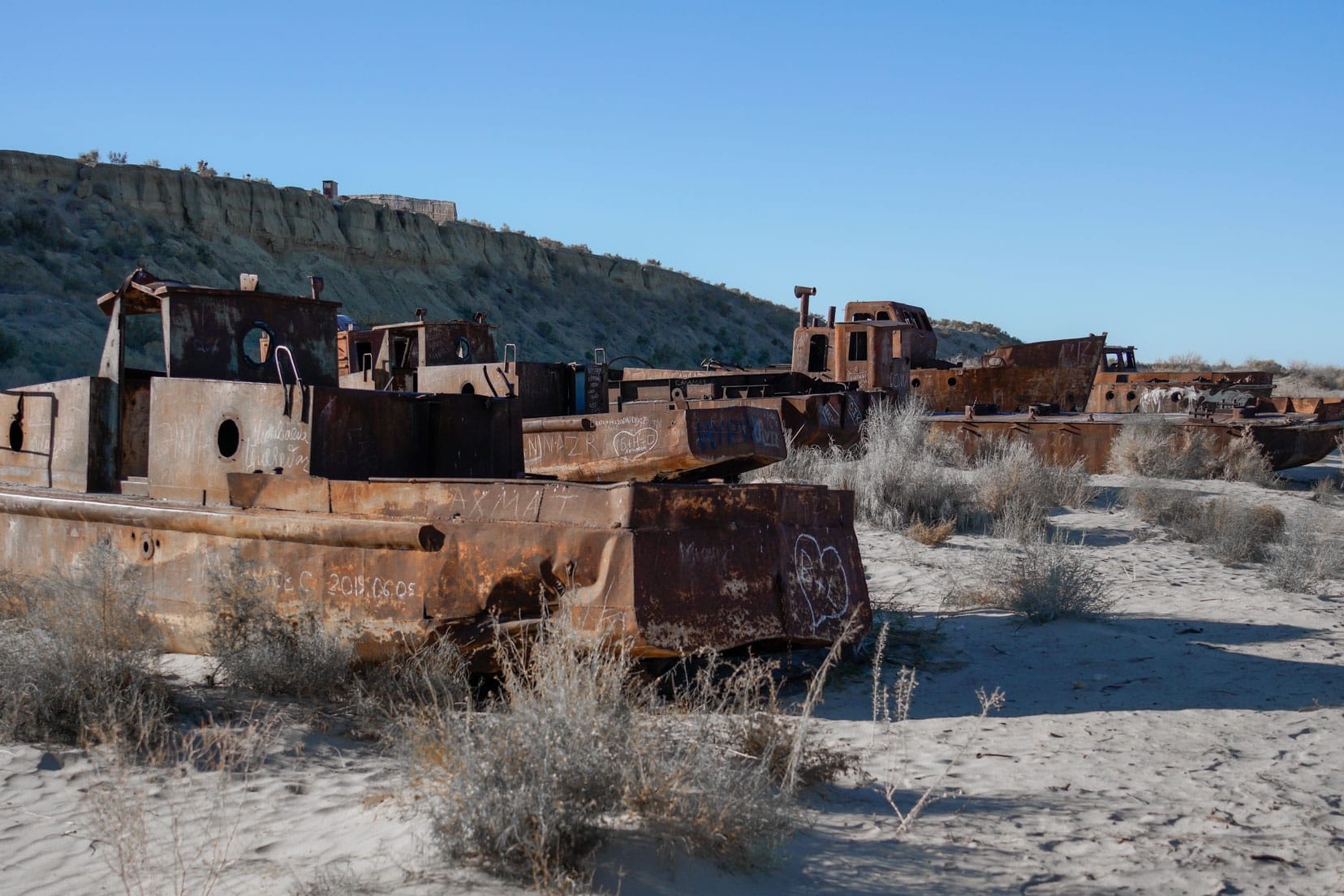
Expectations for the Day:
Tours typically start early, between 6:00 and 6:30 AM, giving you the best opportunity to witness the sunrise during your journey.
Prepare for a long day; it was 16 hours before I returned to Khiva. If possible, consider a two-day tour to allow for a more leisurely pace and time to explore each location thoroughly.
Khiva to Aral Sea Day Trip – My Experience
Our trip included visits to several diverse attractions. Each stop was fascinating and offered plenty of photogenic opportunities.
This day trip spans two neighbouring regions in Uzbekistan. Khiva is located in the Khorezm region, while the attractions described below are situated in the northern Karakalpakstan region.
Stop 1: Chilpik Kala
(Shilpiq – Uzbek spelling; Chilpyk – in Russian)

Chilpik Kala is a round, fortress-like structure with mud walls built on a small hillock in a remote location. It’s roughly a three-hour drive north of Khiva.
Chilpik Kala overlooks the pretty Amu Darya River. Access is via a winding dirt road that leads from the highway to the base of the Chilpik Kala.
This site was thought to be an ancient tower of silence (a royal dahkma or funerary tower) built by the Zoroastrian priesthood. The Zoroastrian faith dates back thousands of years.
Interestingly, the faith demands that the dead do not pollute either fire, water, earth or air, so they lay the bodies of the dead on raised platforms to be stripped of flesh by birds.
The bodies are then dried in the sun, which was considered a purification process.
To access the fortress, use the concrete steps that lead up the side of the hill, passing a modern-looking yurt camp. From the top of the stairs, a deeply rutted, worn section of the wall provides a steep but short clamber to the open rooftop of Chilpik Kala.
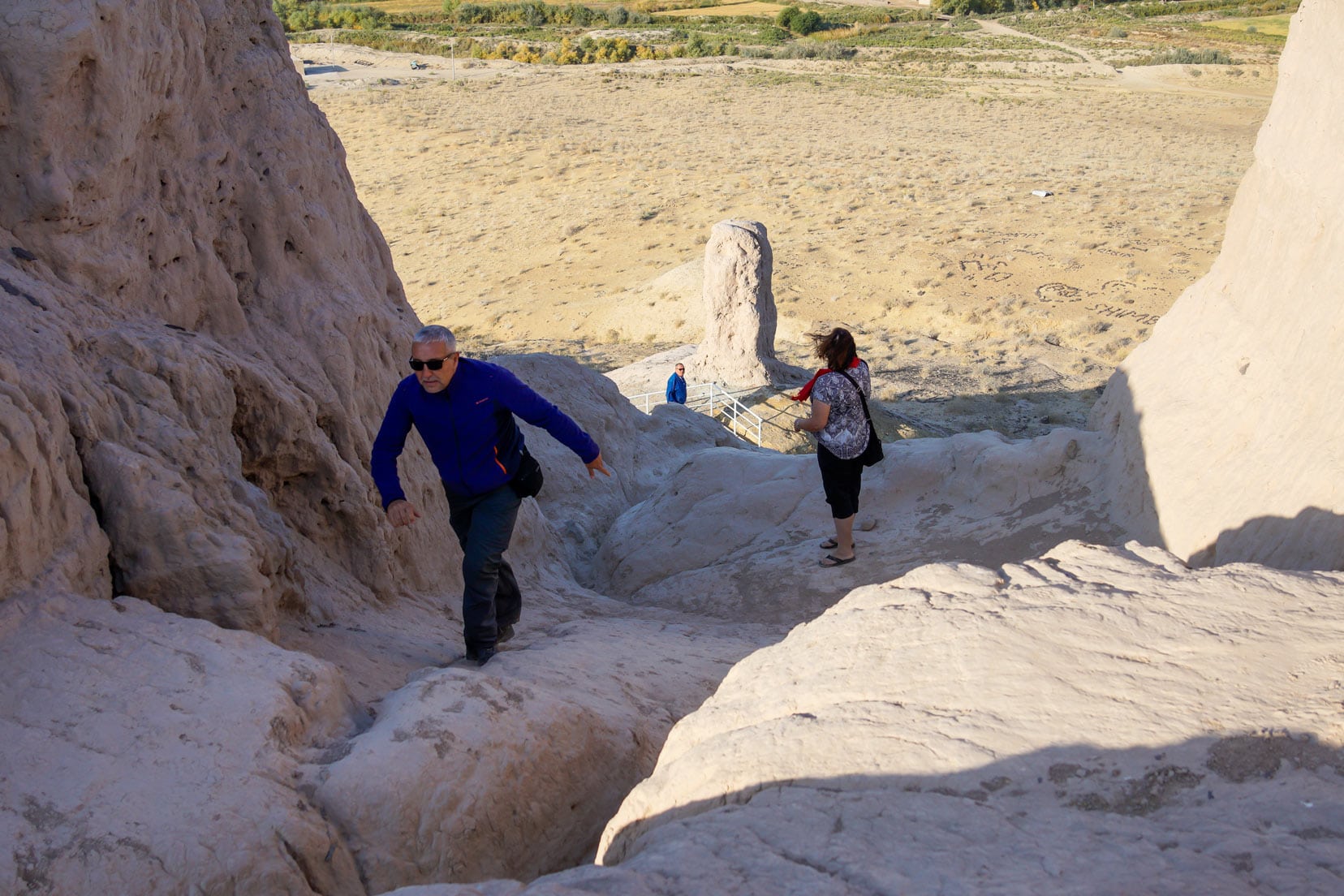
The rooftop is well-weathered, roughly 50m in diameter, leaving no visible indication of how the structure might have looked in its earlier times.
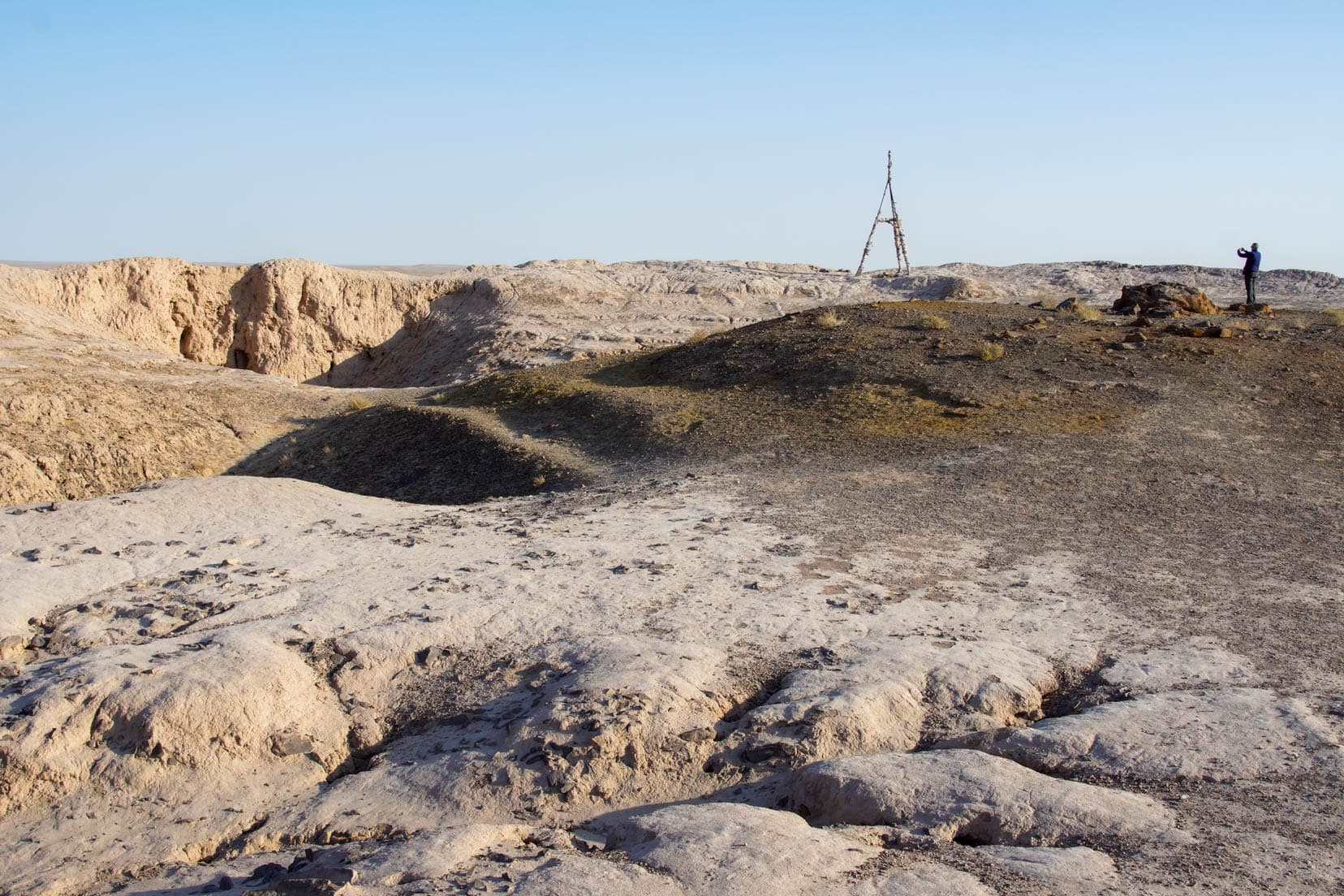
Multi-coloured pieces of cloth wrapped around a lone flagpole gently flap in the cold, gusting wind. Our guide mentions that this is a tribute to the souls that once walked this earth and, with it, a hope for a wish to come true.
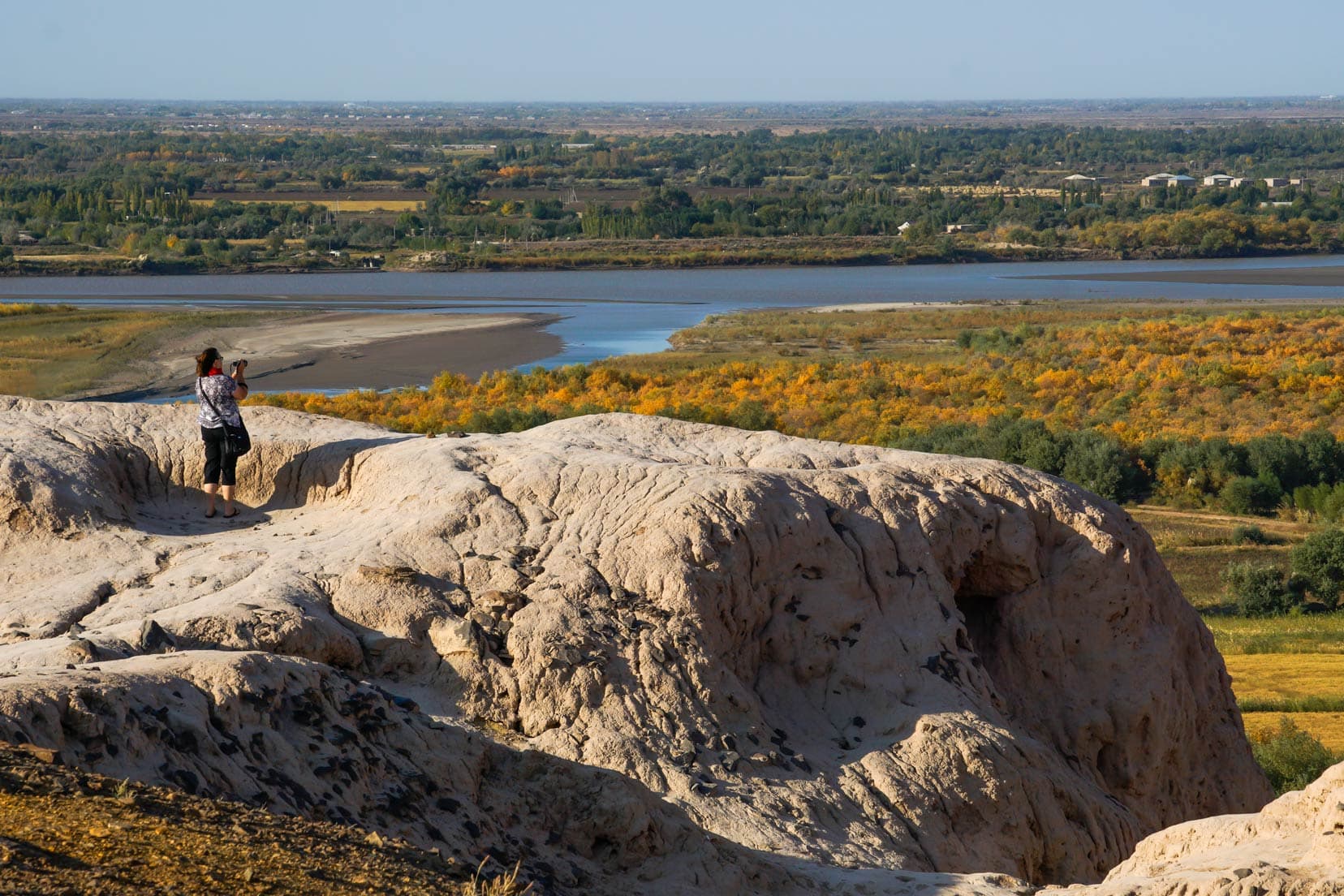
From the top of Chilpik Kala, beautiful landscapes open up. To the west, the splendour of the fertile lands of the Amu Darya River and to the east, a dry, flat desert terrain is punctuated by small hillocks.
The only permanent inhabitants these days are the pigeons that circle Chilpik Kala and roost in its mud wall crevices.
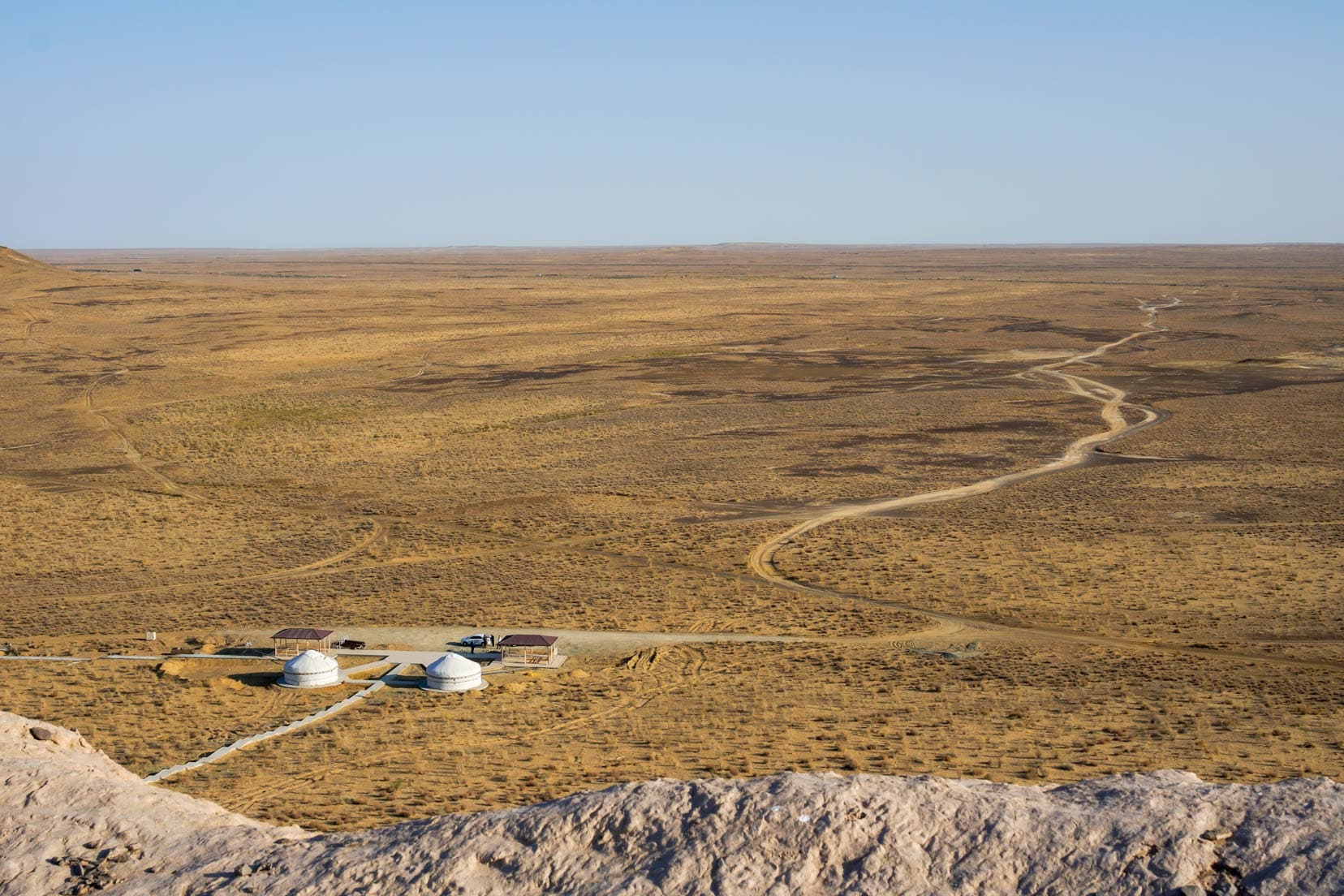
An hour is enough time to absorb all this magnificence. Access to Chilpik Kala is free.
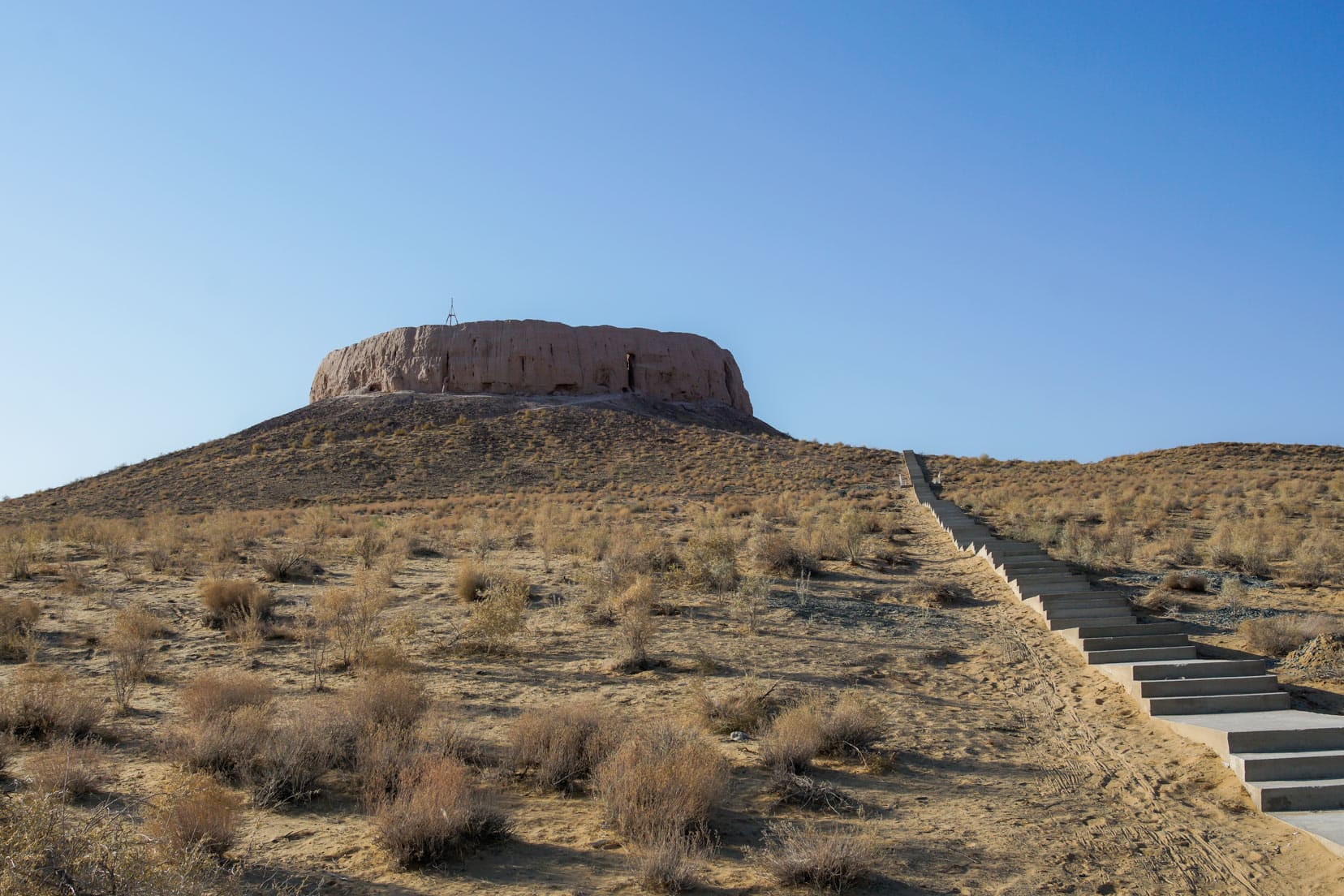
An interesting point is that Chilpik Kala still holds great significance in Karakalpakstan, appearing beside Amu Darya (the nearby river) on the emblem of the Karakalpakstan national flag.

Stop 2: Nukus Art Museum and Savitsky Collection
The city of Nukus lies a short fifty-kilometre drive away, and it’s here that you can find the Nukus Art Museum, also called the Karakalpakstan State Museum of Art. It is sometimes referred to as the Savitsky Museum.
The museum is home to the prized Savitsky collection of Russian avant-garde art, founded single-handedly in the 1960s’ by Igor Savitsky. He was a Russian archaeologist and collector who coveted over 90,000 pieces of art and artefacts from Soviet censorship.
Today, it is heralded as one of the finest collections of Soviet avant-garde art in the world.
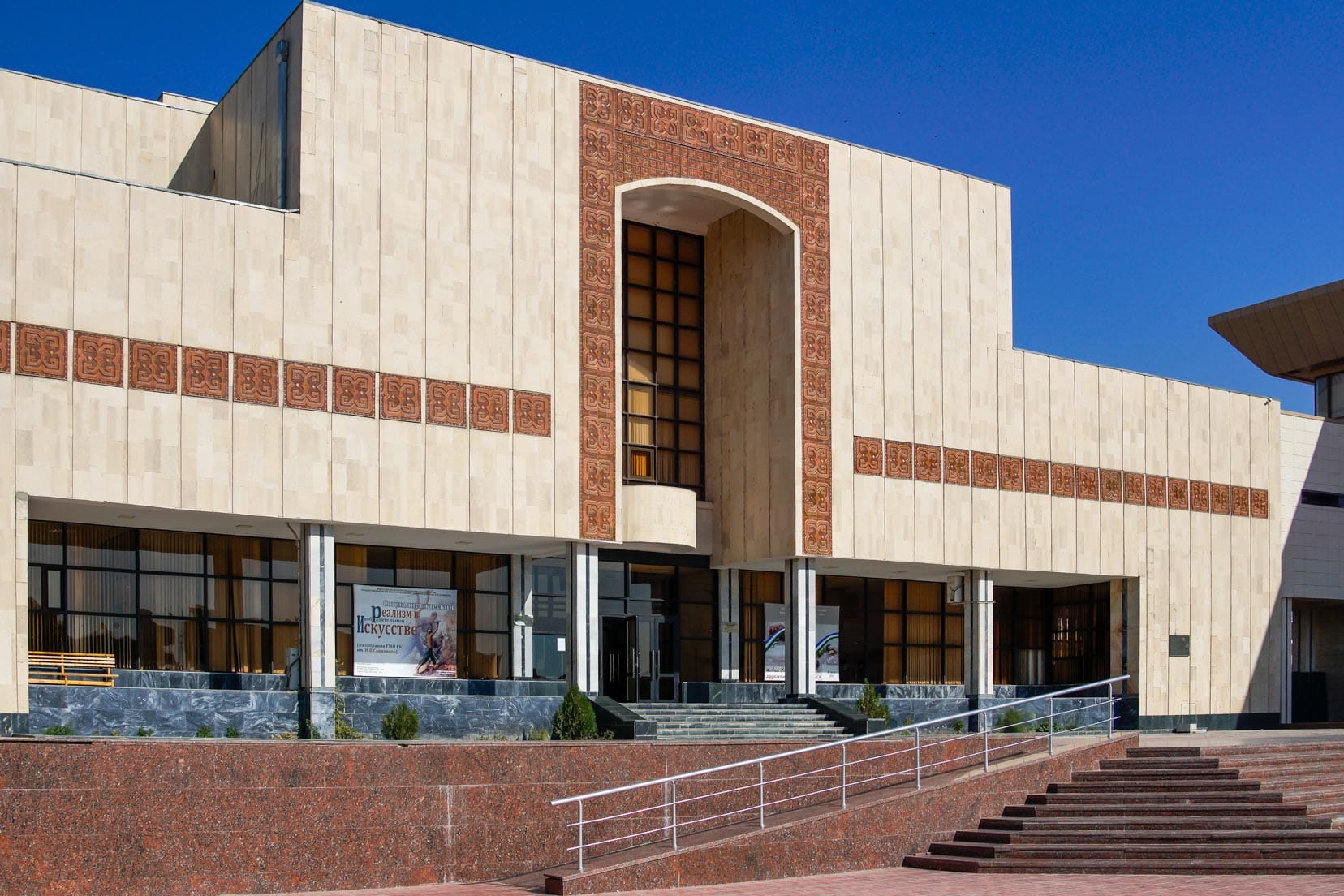
Due to the many pieces of artwork on display, a second building was built to house them. Each of the two buildings has its own admission fee. Backpacks and hand-carried bags need to be left at a safe storage location at reception.
Some custodians walk the museum to ensure all is in order.
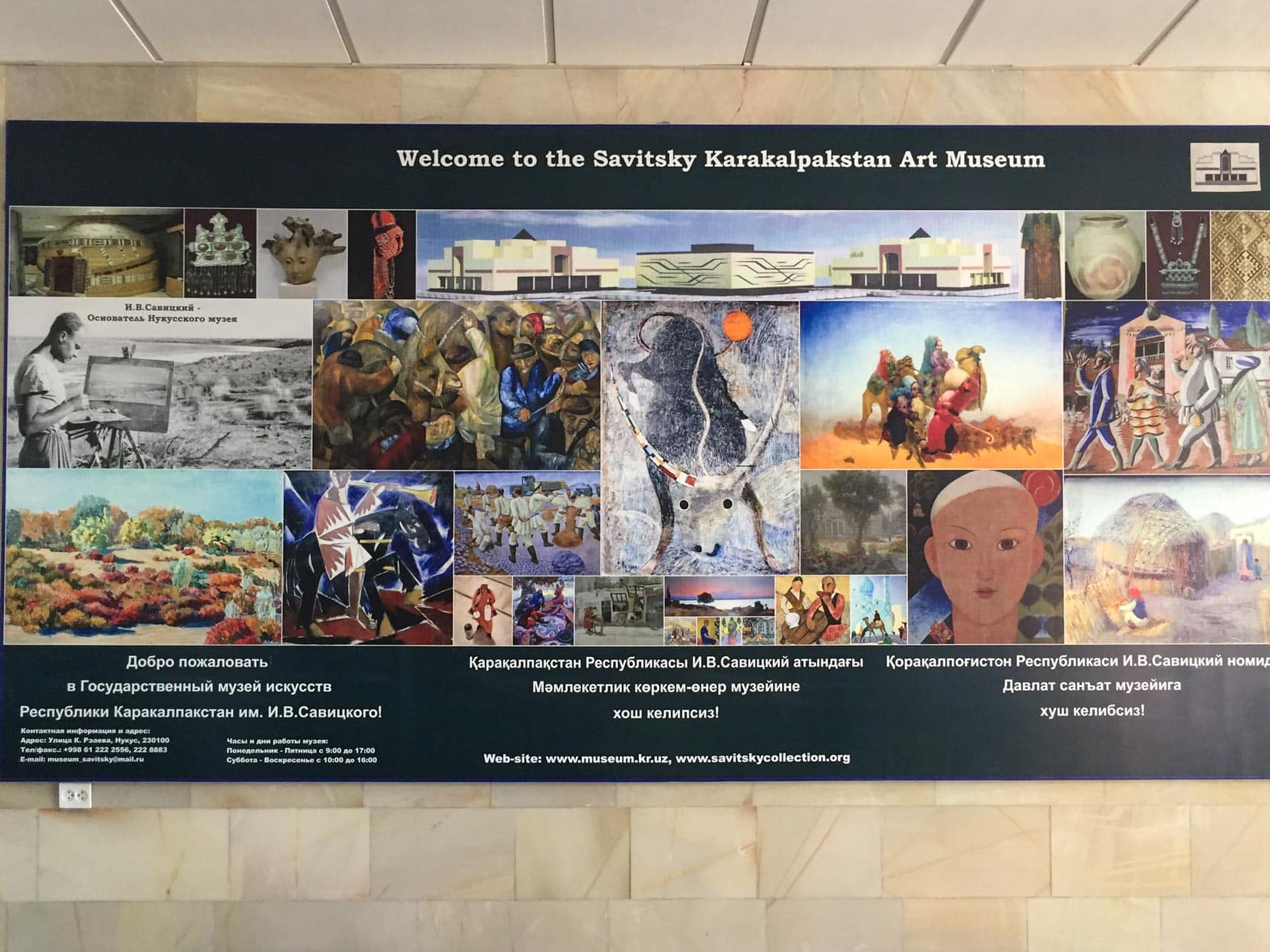

Entry and Service Fees, Including Opening Times of Nukus Art Museum
I only wanted to pay one entrance fee, so I asked at the counter which was the better museum and was recommended the main museum. It houses the most famous pieces of work. I also paid extra for taking photos.
You can see the rather comprehensive fee structure and opening times below:
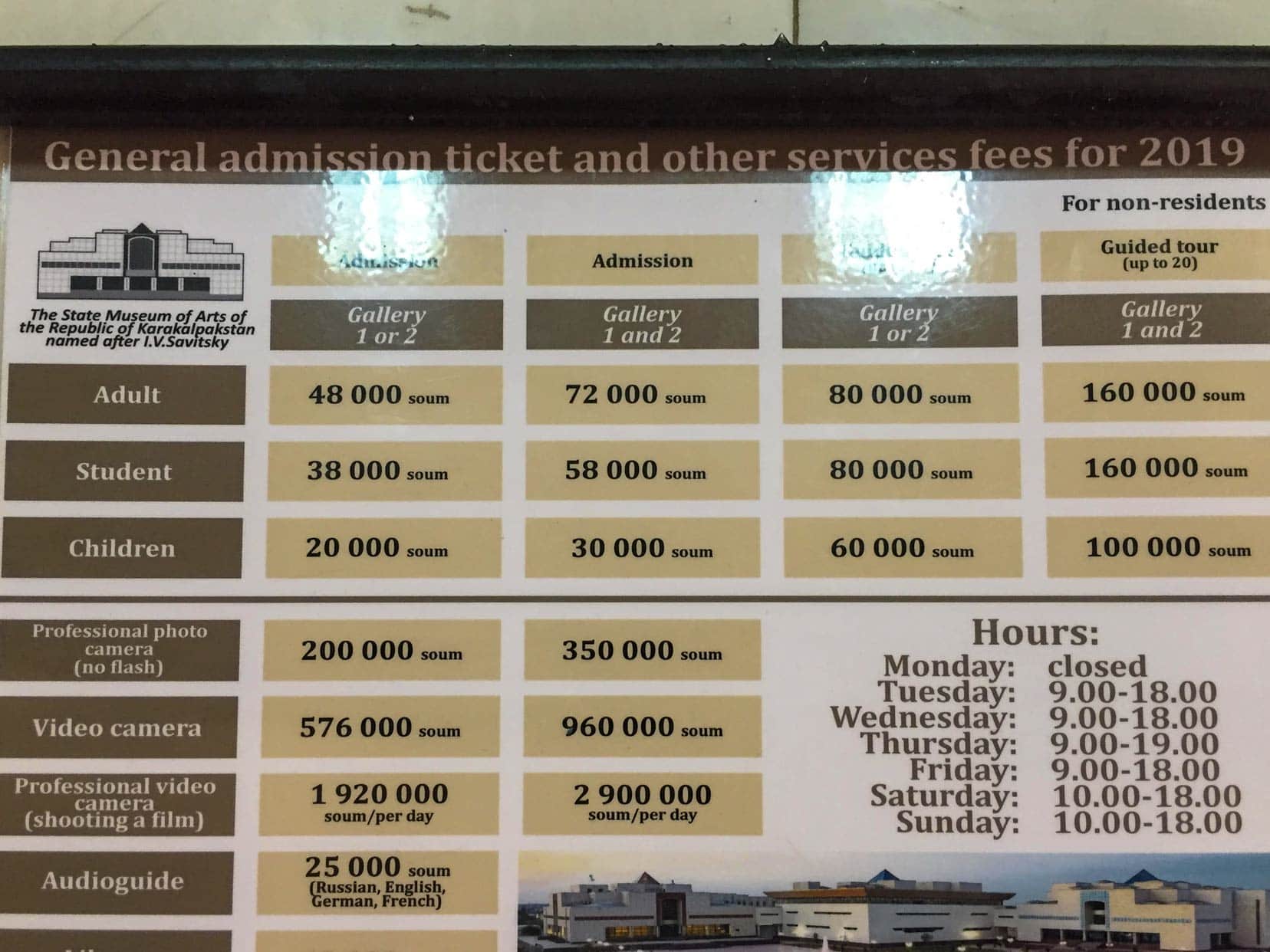
Note: As of Jan 2024, the Savitsky Museum’s archeological and applied arts exhibitions remain indefinitely closed due to museum renovations.

The Savitsky Collection and More
The museum’s marble stairwells and floors give it a grand appearance. Artefacts from different parts of Asia, the Middle East, and northern Africa adorn the walls and cabinets, along with a dazzling display of avant-garde art.
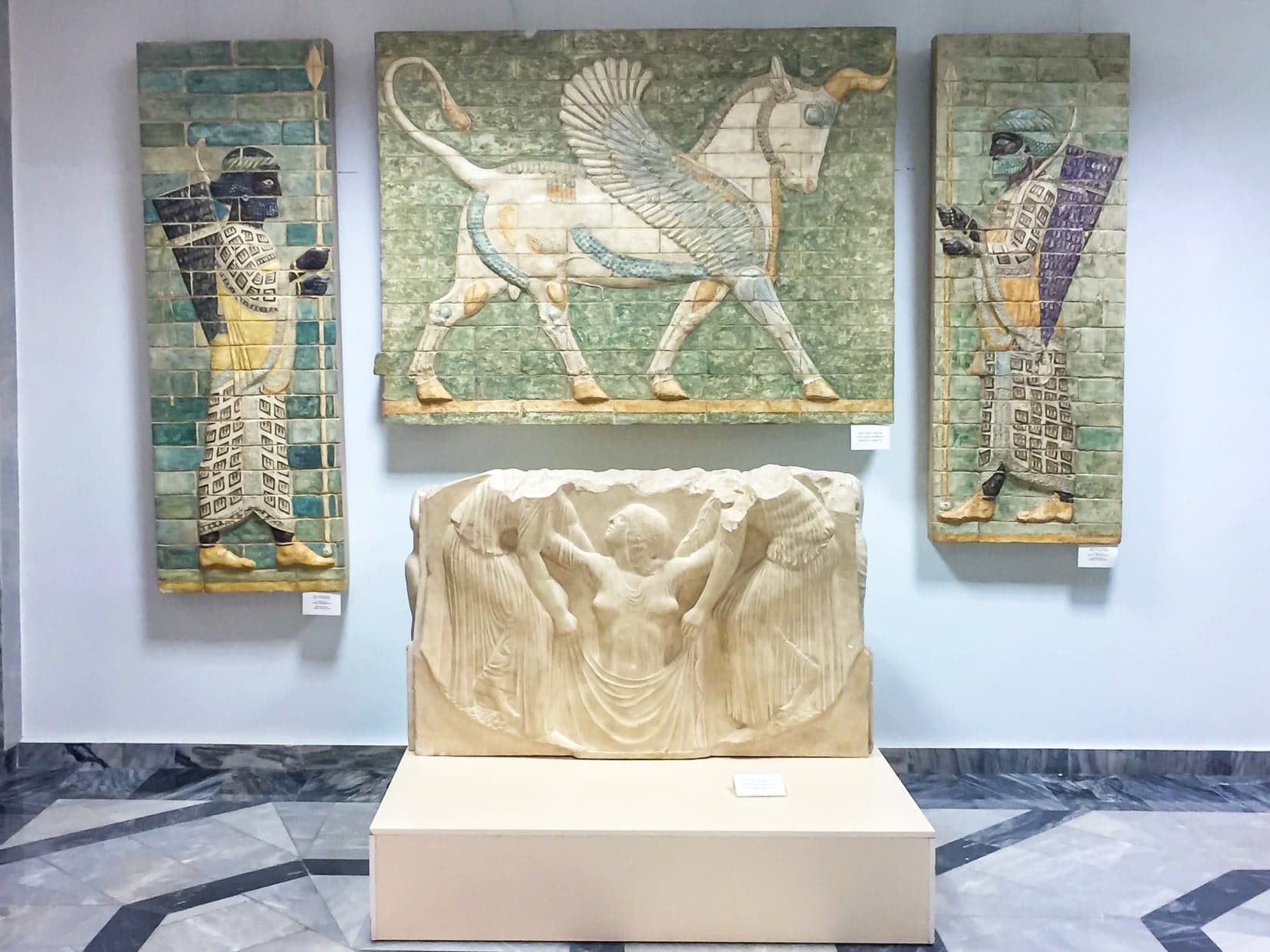
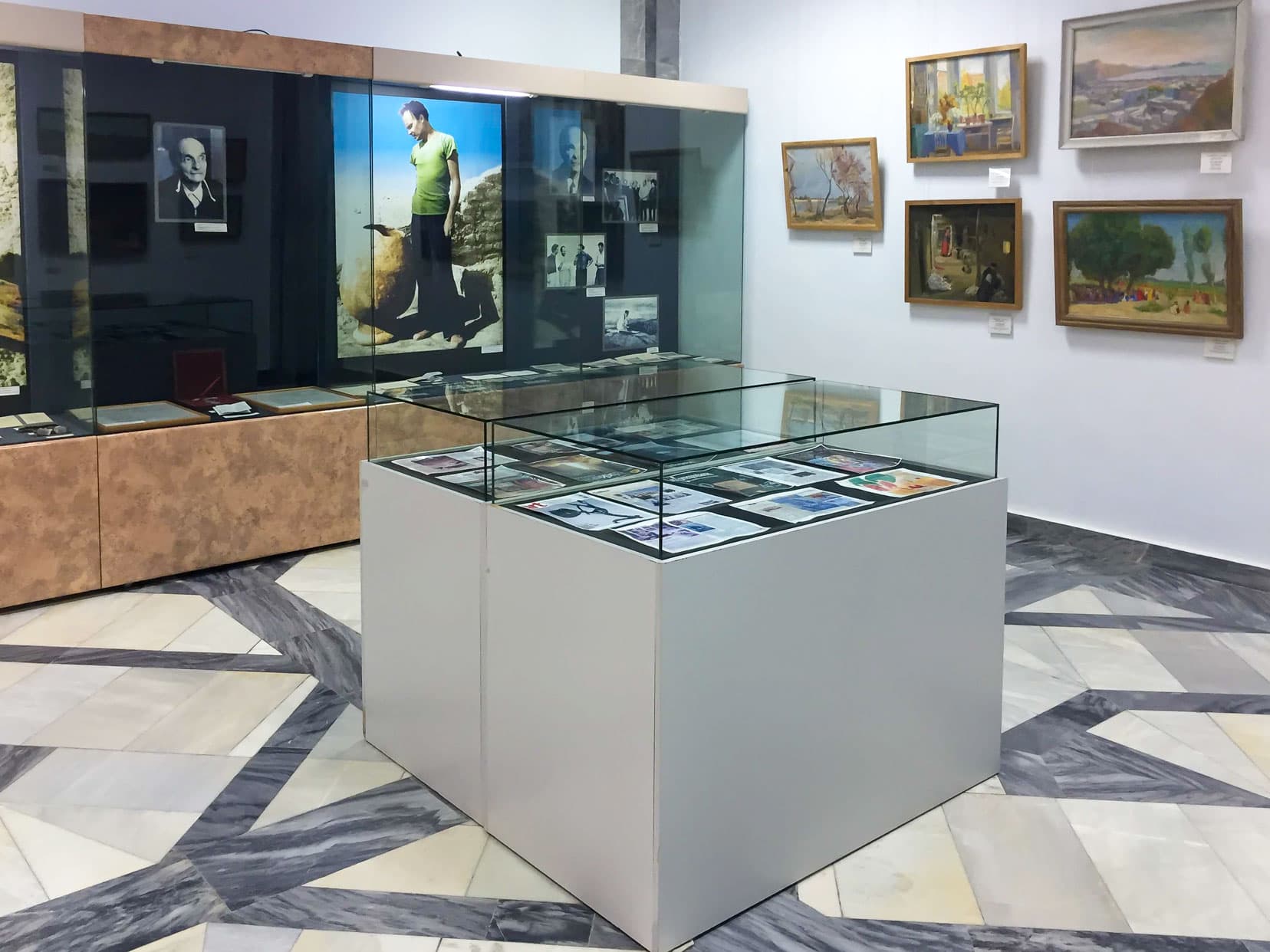
I spent about one and a half hours at the museum as there was much to see. When exiting the museum, I was in for a surprise.
I was taken aside by the Uzbekistan Television crew, who were filming outside the museum and asked what I thought of Uzbekistan, the people and my trip in general.
After I said I was having a great time and was impressed with all that Uzbekistan had to offer, there were smiles all around.
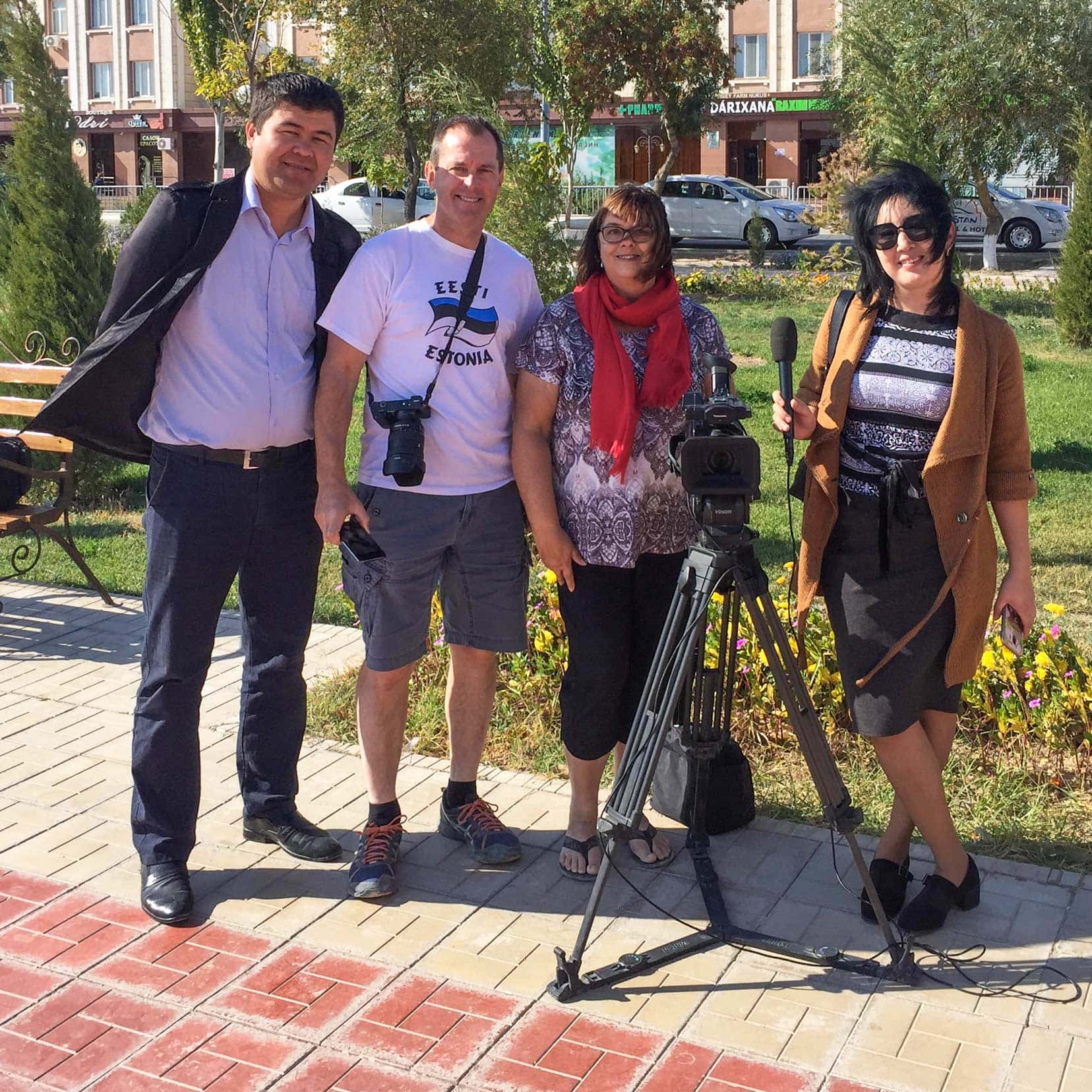
Stop 3: Mizdakhan Necropolis
The next stop was the Mizdakhan Necropolis (or city of the dead), a short 22-kilometre drive from Nukus and south of the modern city of Khodjeyli. The Mizdakhan Necropolis covers an area of 100 hectares, with historians claiming that it dates back over two thousand years.
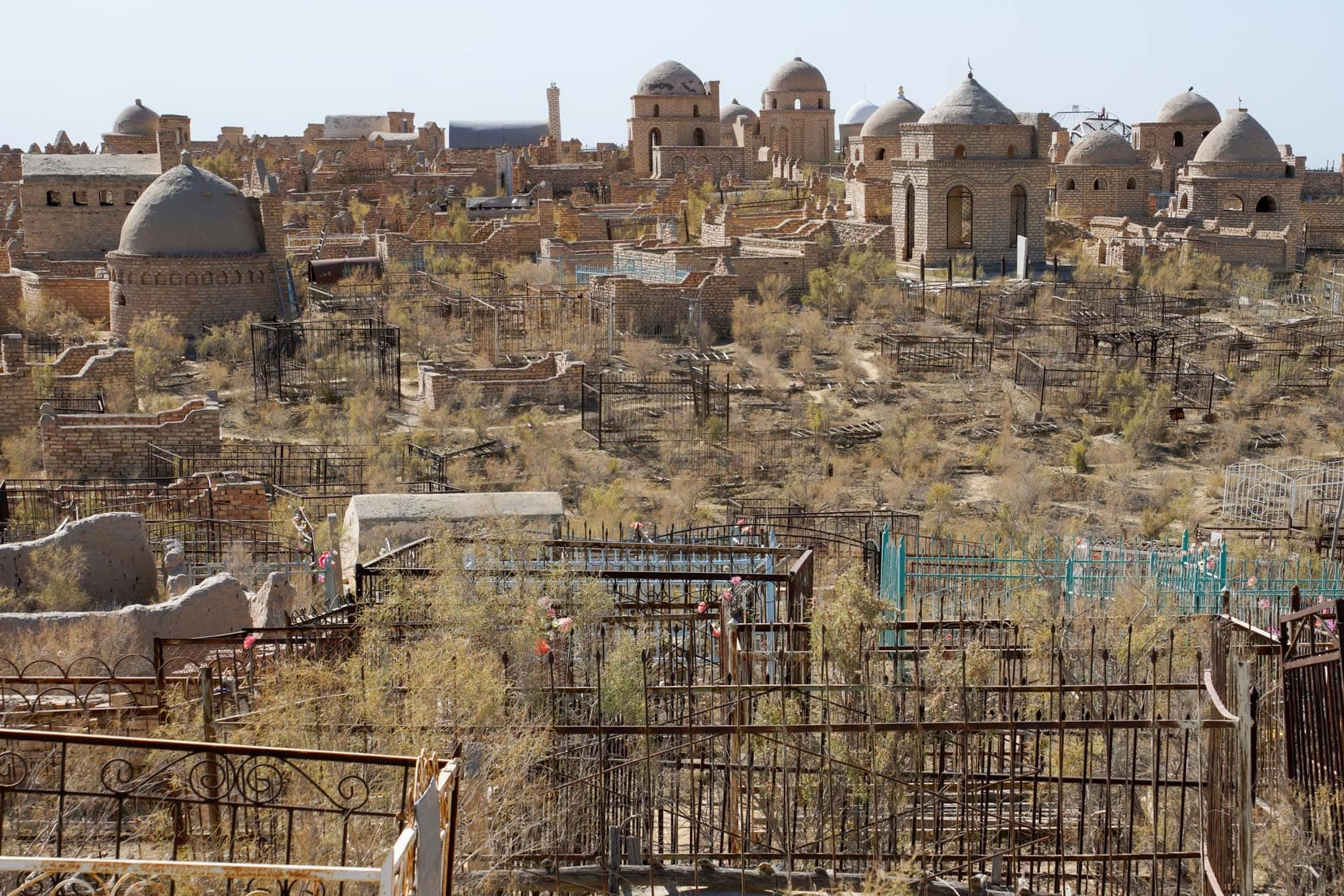
If ever there was a place that felt sad and lonely, it is here.
From the entrance, only a very small part of the cemetery is seen; however, upon cresting the first rise, ahead were undulating landscapes filled with thousands upon thousands of graves.
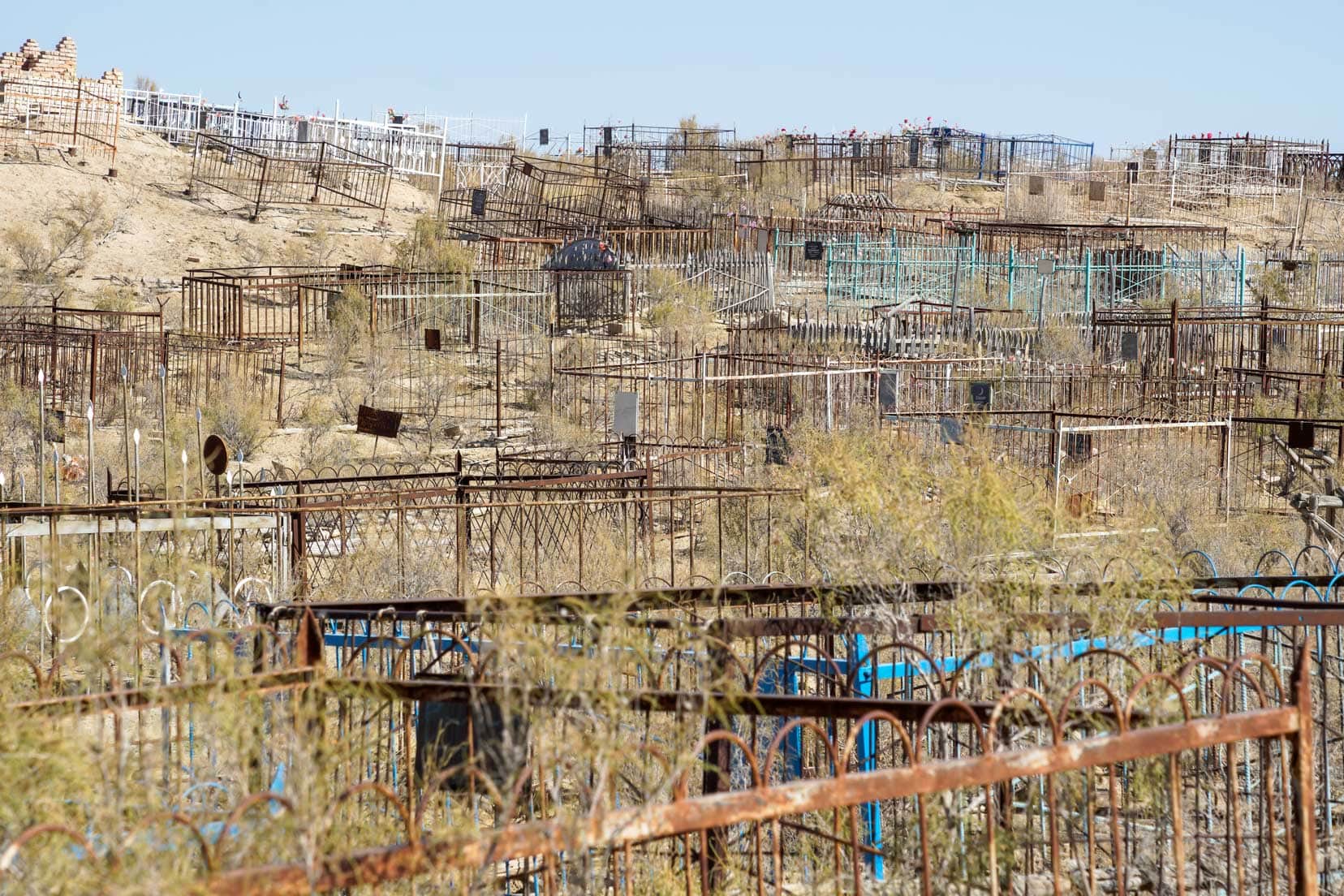
It sure is something to behold.
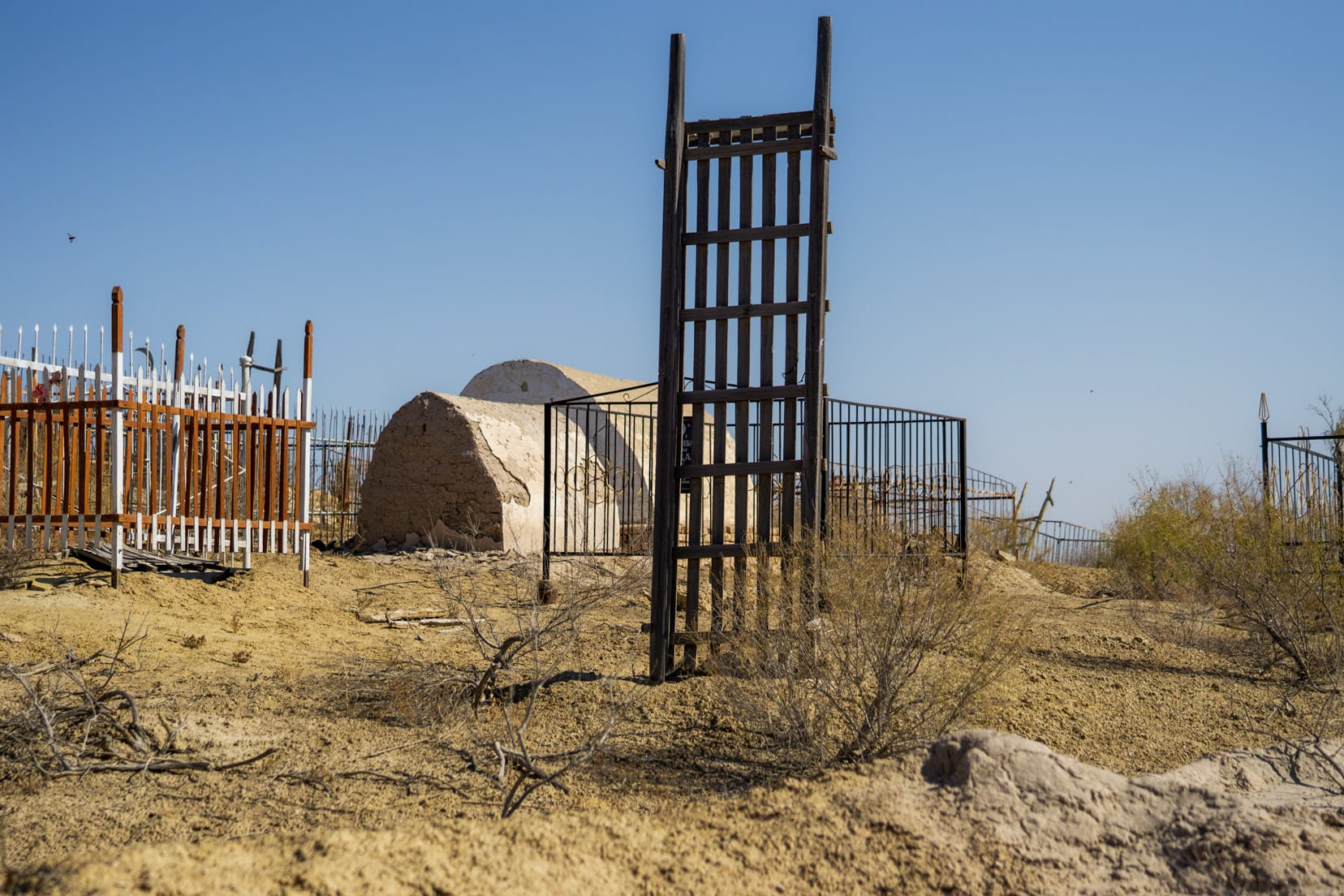
Wandering and observing the many graves gives insight into the beliefs of the people.
One interesting sight is the vertical ladder, which is said to offer the departed access to heaven. Some other interesting attractions I discovered in the Mizdakhan Necropolis were:
Mausoleum of Muzlum-Sulu-Khan
This 14th-century mausoleum looks like a rather plain, uninteresting brick-like structure because only the dome and arched entrance are visible. However, the beauty lies within.
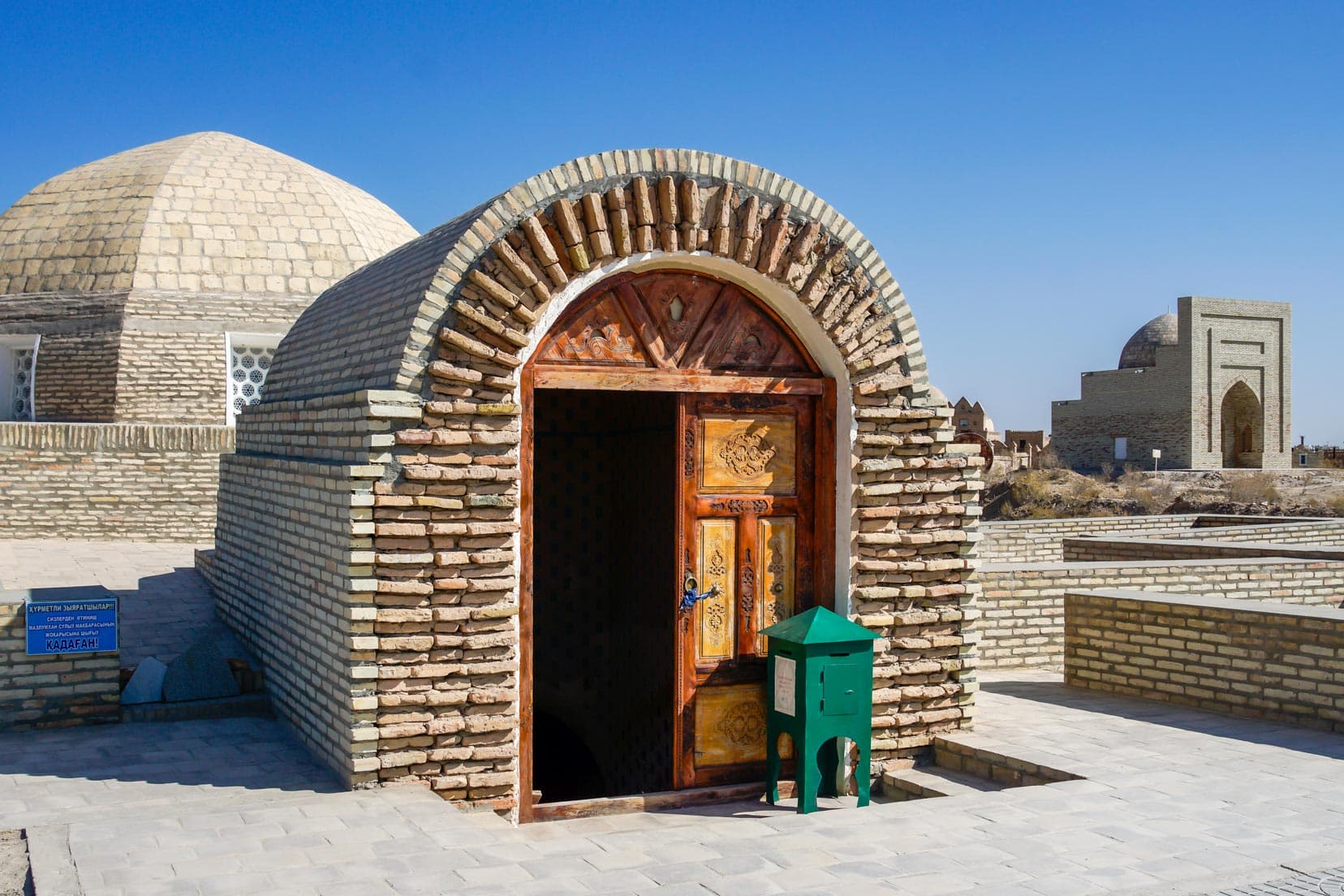
Descending the stairs of the mausoleum brings into view walls decorated with small dazzling blue-coloured tiles embedded into the mud-brick walls. The internal octahedral vaults house two gauze-covered coffins with domes resplendent in azure-coloured tiles and latticed windows.
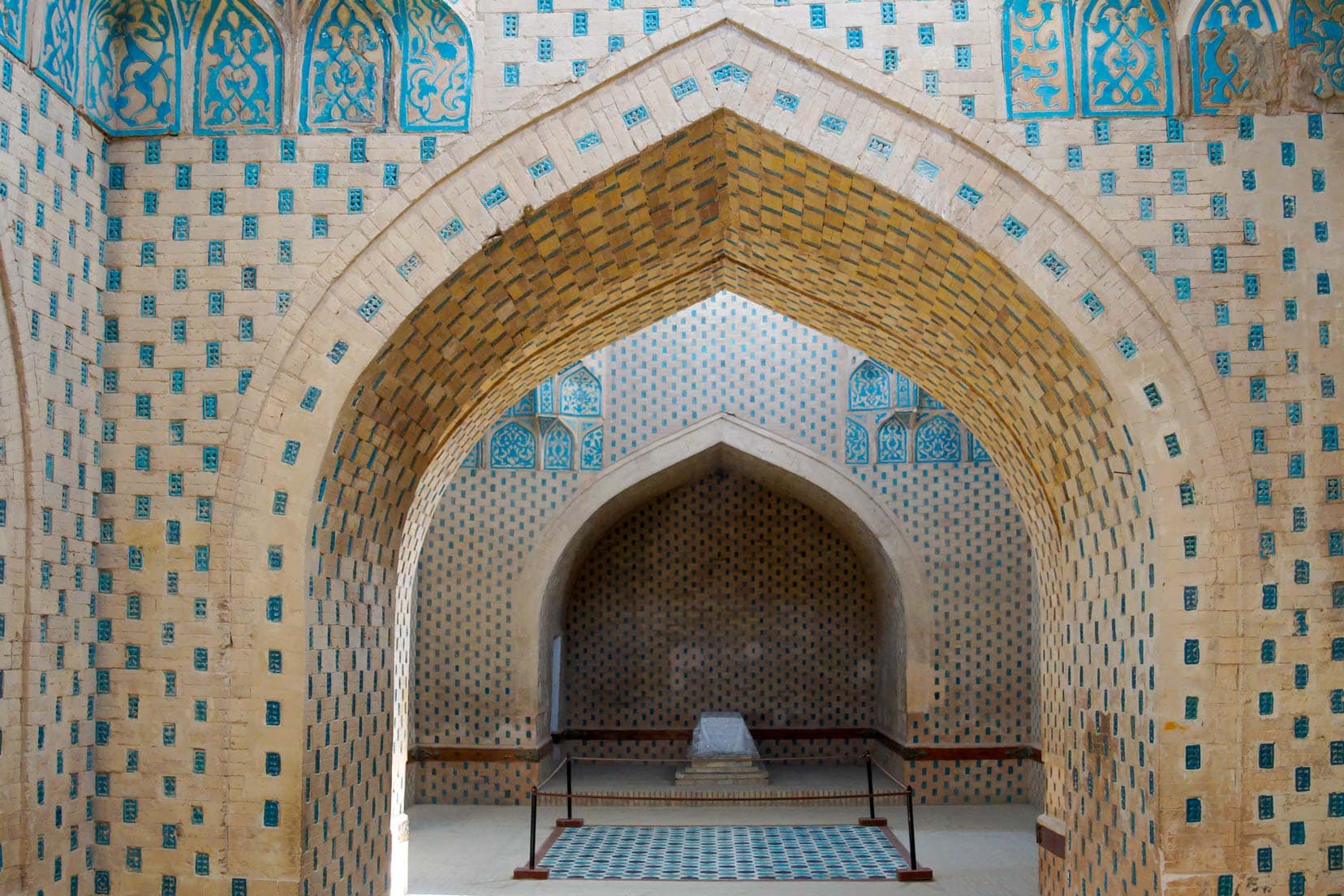

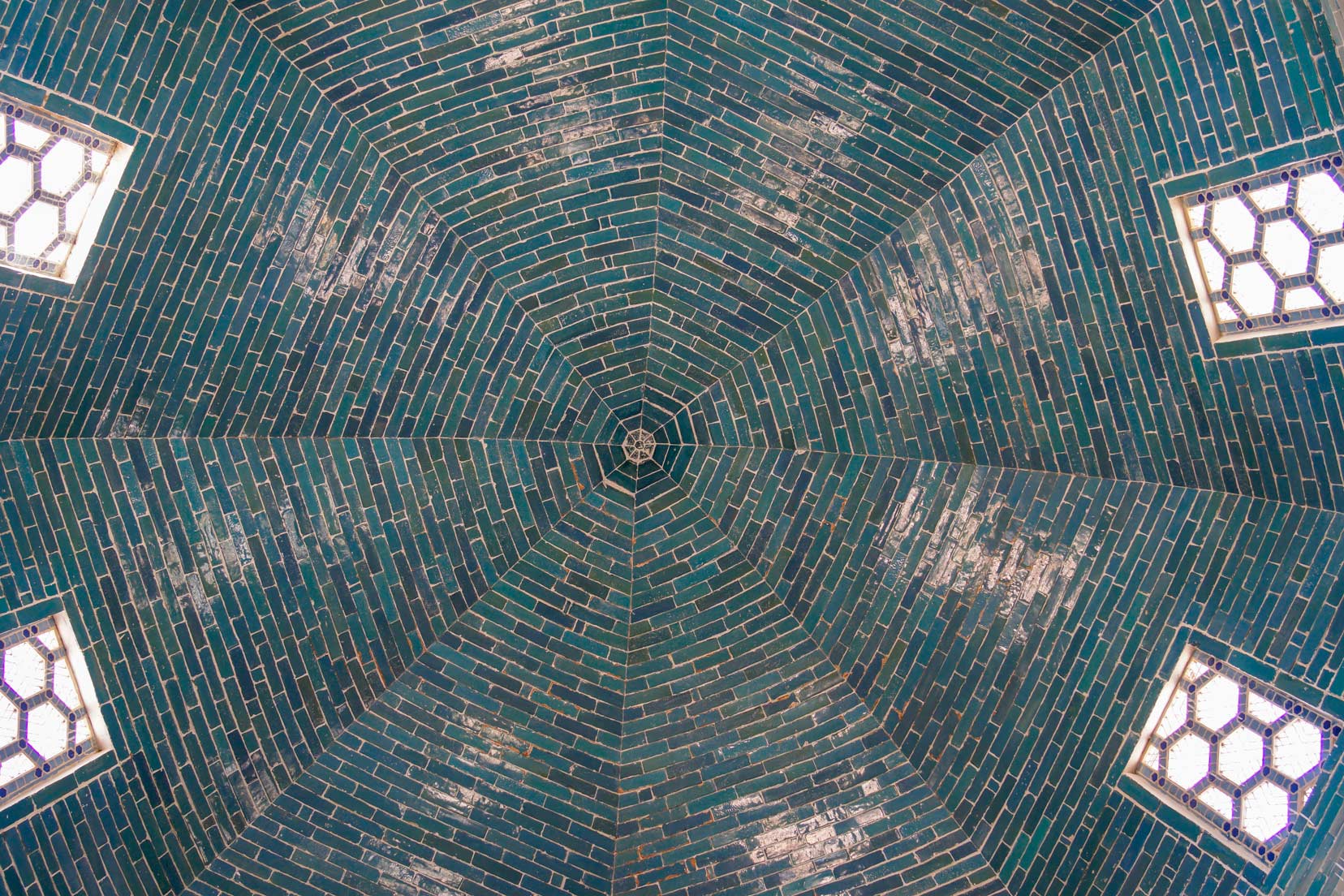
Hillock of Jumart Qassap
This small five-metre-high burial mound is said to have been built over the grave of Saint Jumart. Ancient belief has it that a woman can be cured of sterility by tumbling down the slope seven times.
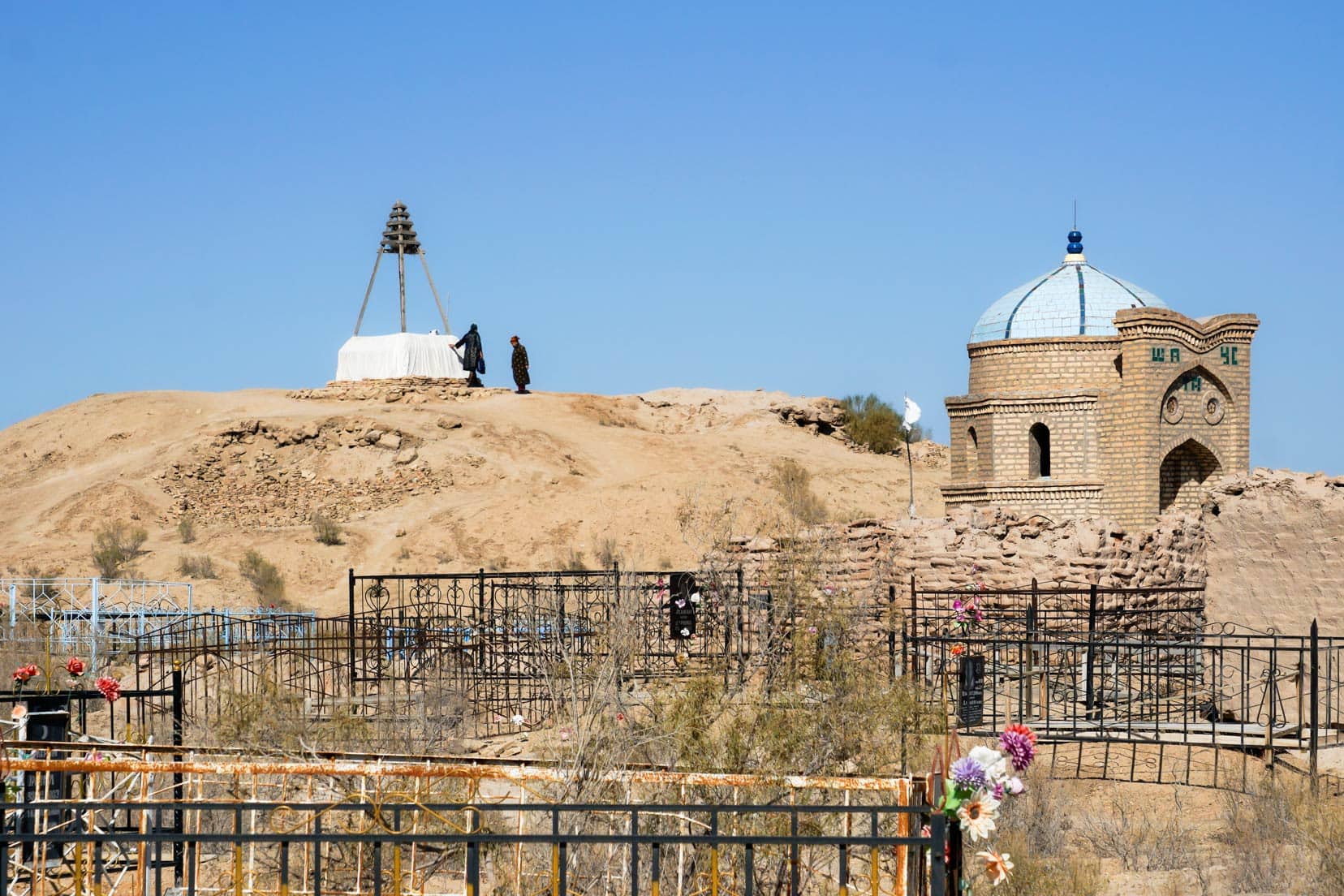
Erejep Caliph Mausoleum
This huge structure dominates the local area with its three high walls and dome roof remains. It is an impressive and imposing structure, dating back to the 9th century.
According to legend, it is the burial place of an Islamic saint who preached in the area.
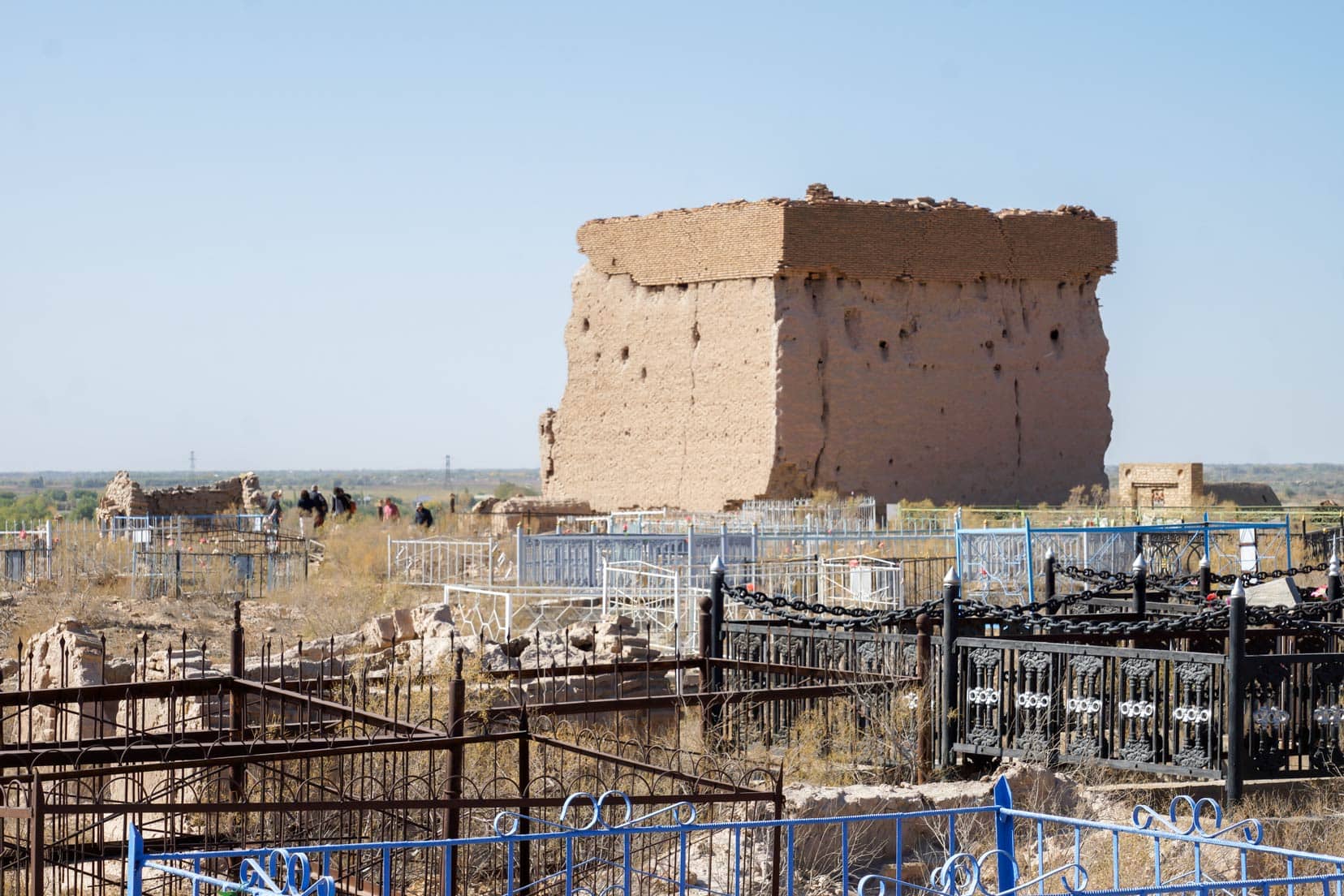
Interestingly, the Erejep Caliph Mausoleum has a cane base that made it earthquake-resistant, a clever construction technique. Simply ingenuous.
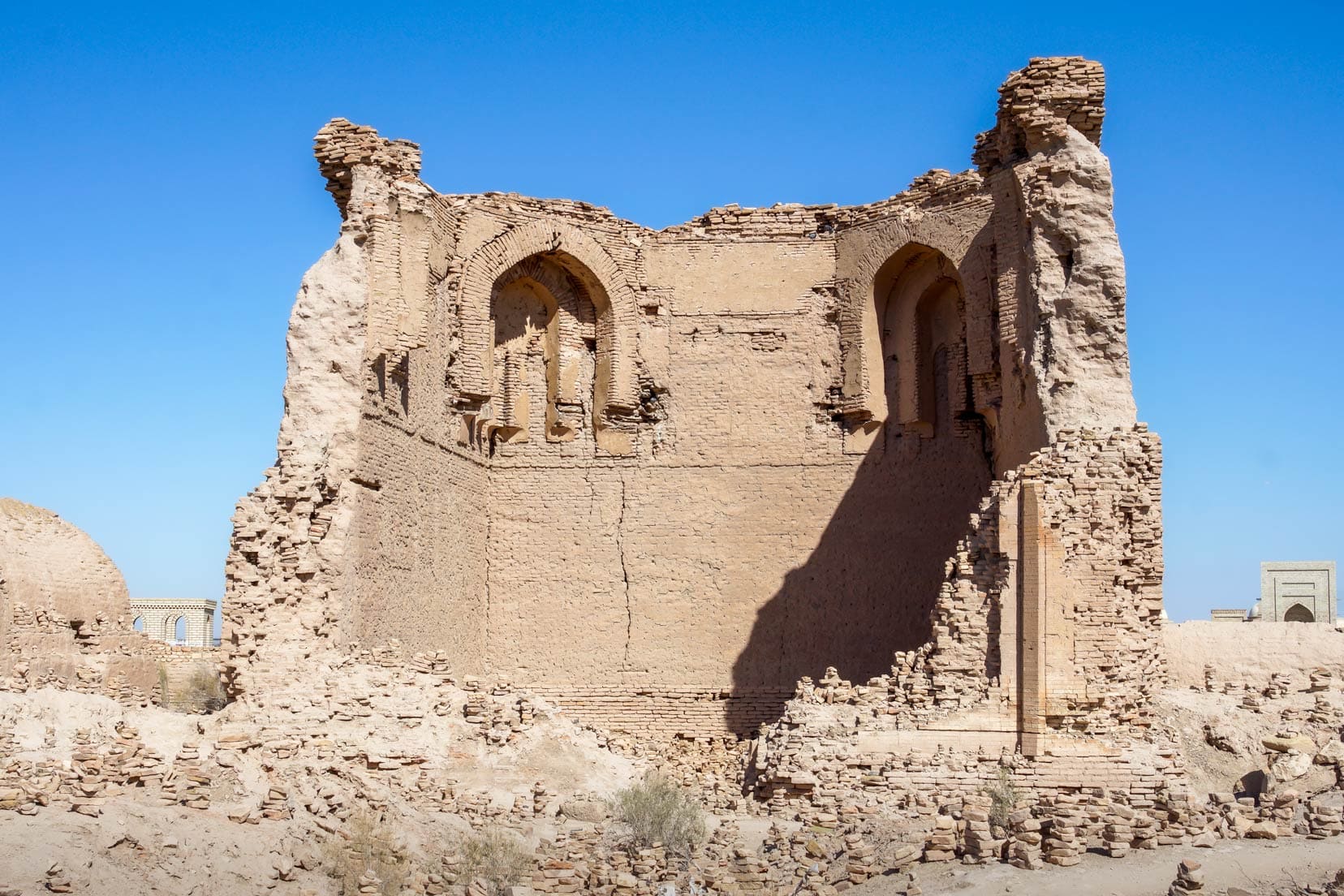
Mausoleum of Shamun-Nabi
Saint Shamun was reputed to have special powers. He could heal the sick, talk to the animals, and even control the weather. No wonder he was revered.
His 18th-century mausoleum differs from others in that it houses a tomb with a ceiling of seven domes.
His tombstone is a massive 25 metres in length. Surprisingly, when archaeologists opened his tomb, there were no remains inside.
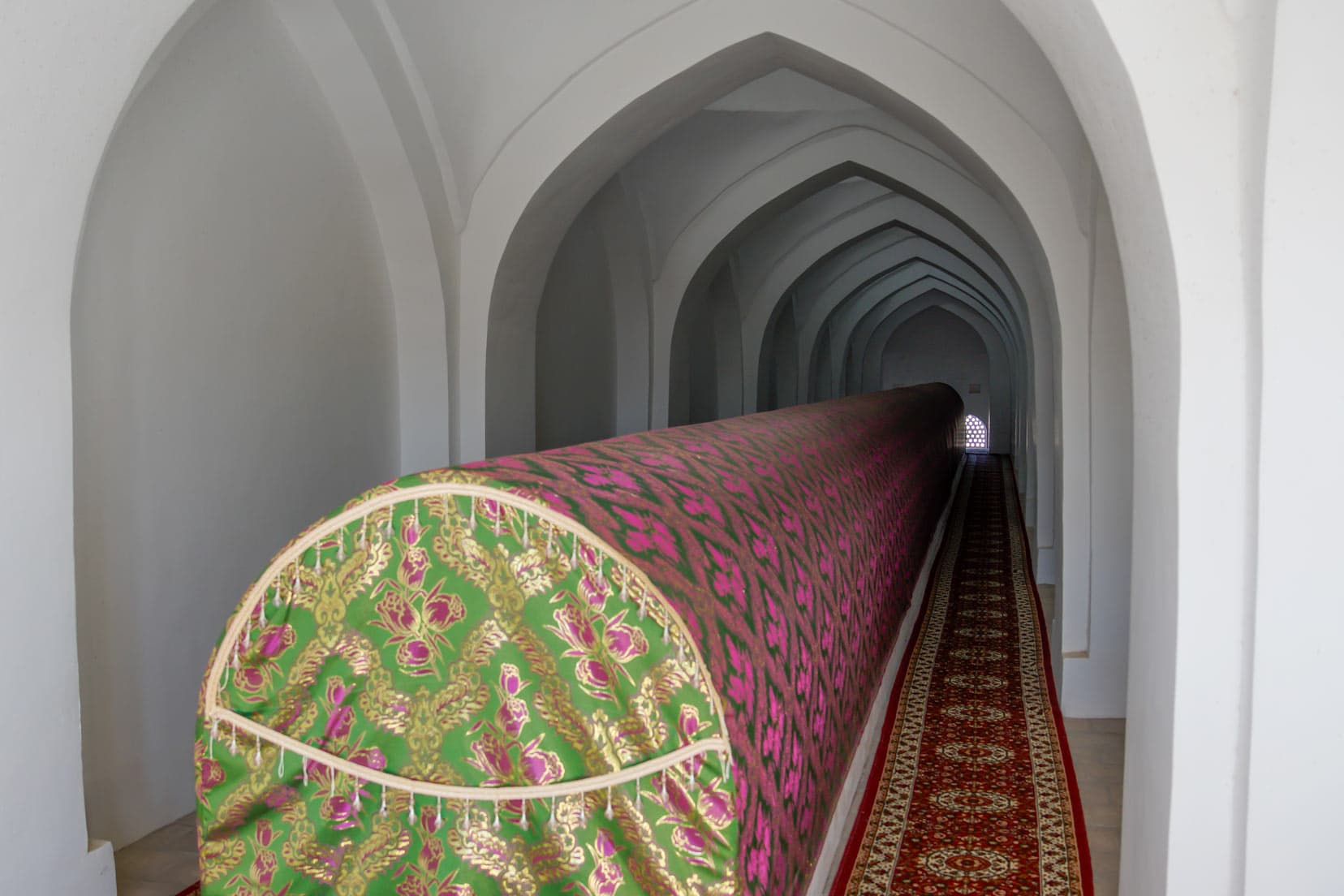
(Next to Mizdakhan Necropolis are the remains of the 4th century BC Gyaur-Kala fortress. It is one of the oldest and most visited pilgrimage sites, dating back to the time of the advent of the Zoroastrians. We didn’t have time to visit the Gyaur-Kala fortress.)
There is much to take in here at Mizdakhan Necropolis, and the 1.5 hours went by too quickly.
During our visit, we were approached by one local caretaker who wanted money in return for a personalized tour; however, we were leaving and instead voluntarily donated to the drop boxes that are found near the mausoleums with the money used for their upkeep.
The Mizdakhan Necropolis is free to enter.

Stop 4: Muynak History Museum
Arriving at Muynak in northern Karalkapakstan, some 185 kilometres from the Mizdakhan Necropolis, the small Muynak History Museum is found.
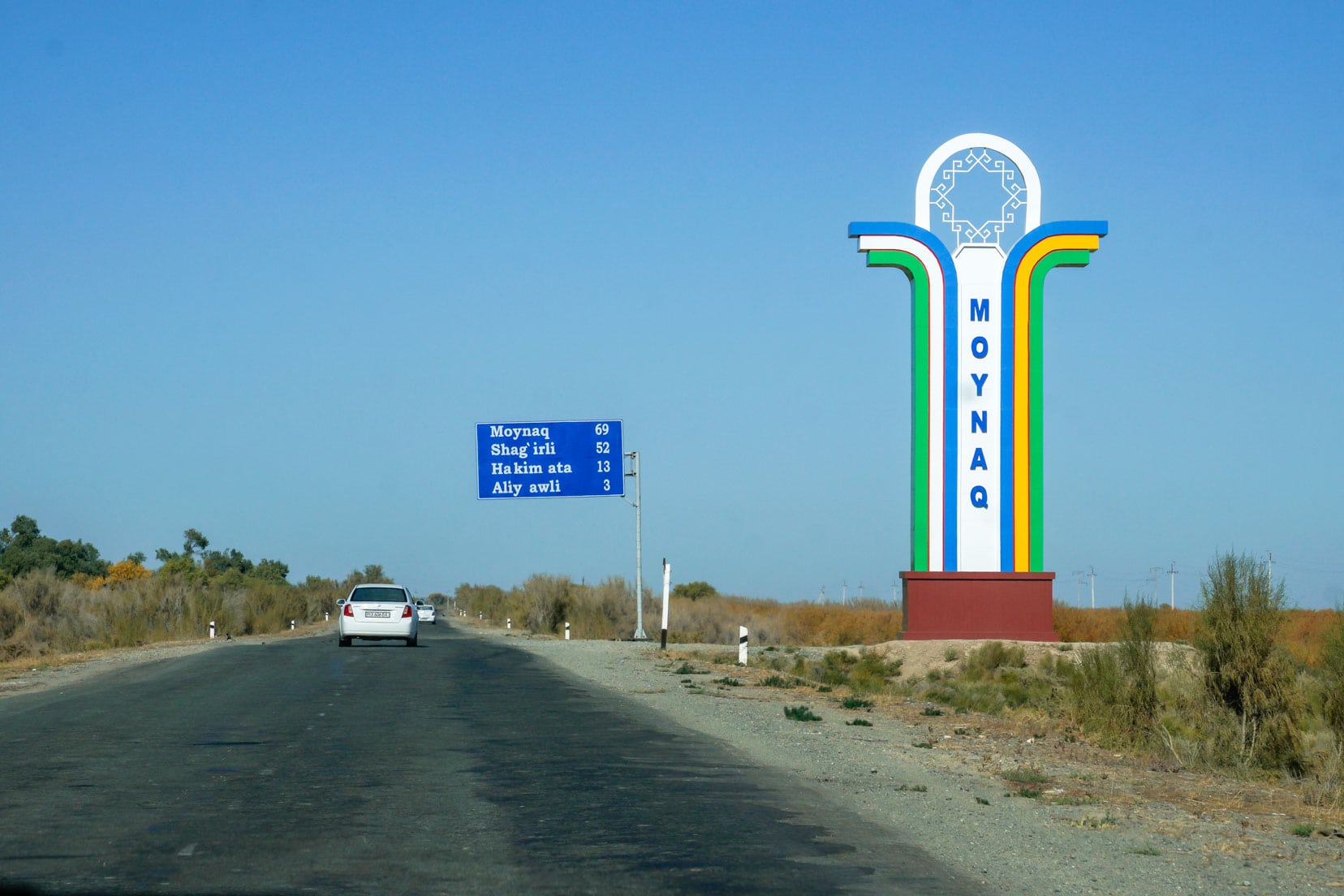

Central to the museum is a large video room with a poor-quality film dubbed with bad English. Some of the footage is interesting, but it was nearly impossible to hear the audio of the explanations — a real shame as it could have put to rest many of my questions.
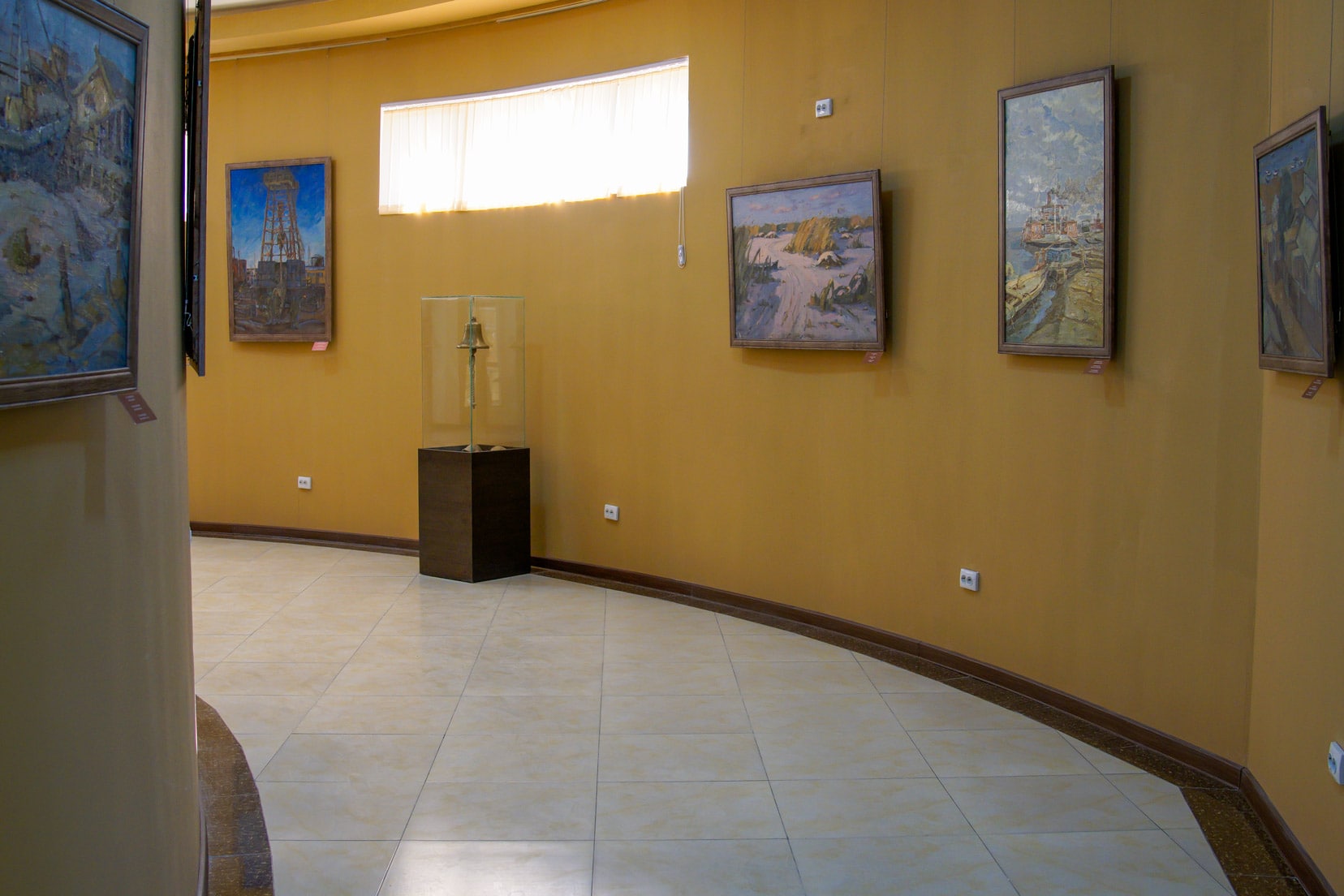
The internal small semi-circular hallway is adorned with paintings and photographs of days now past, when fishermen could ply the Aral Sea for their bounty.
It was definitely a happier time.
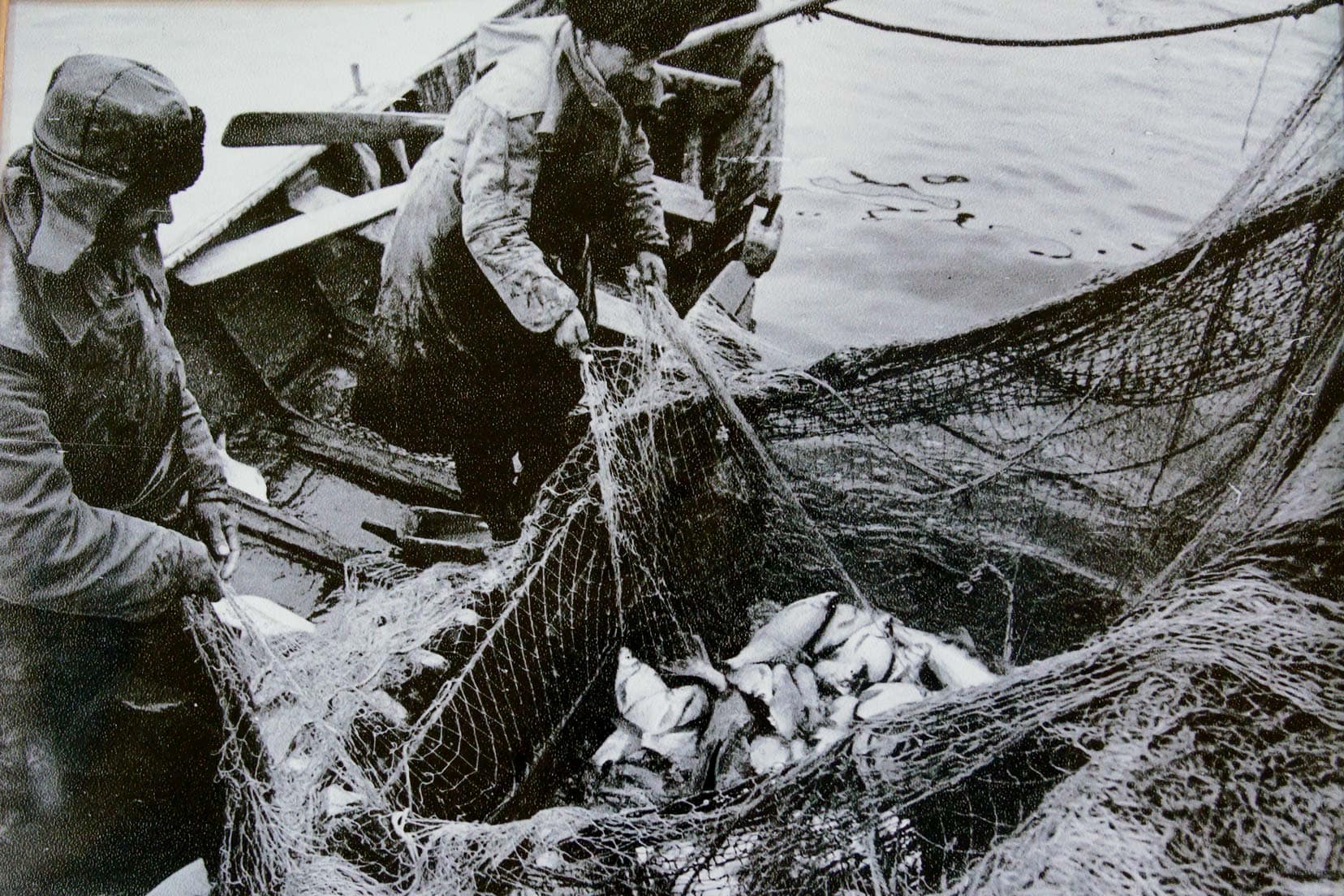
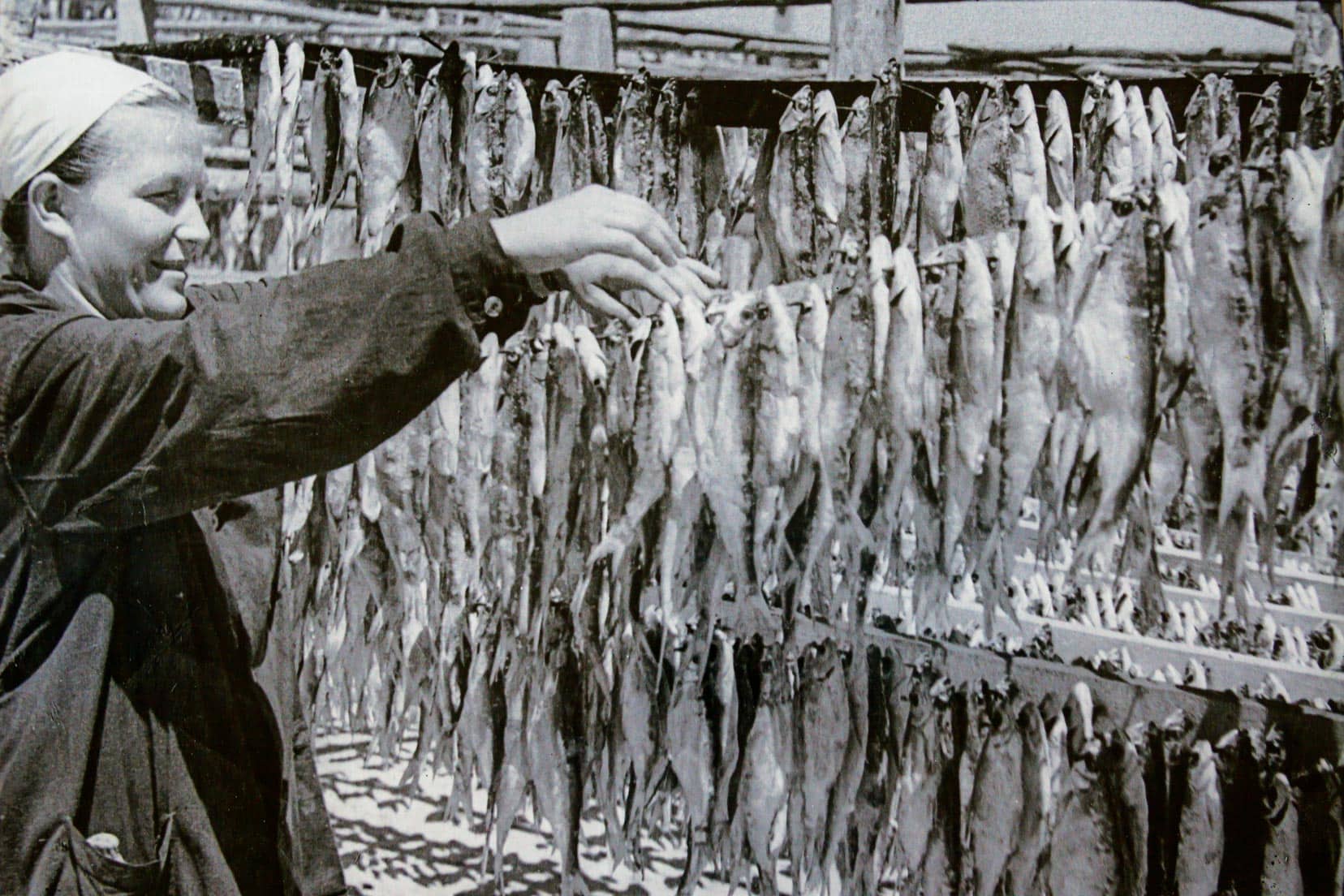
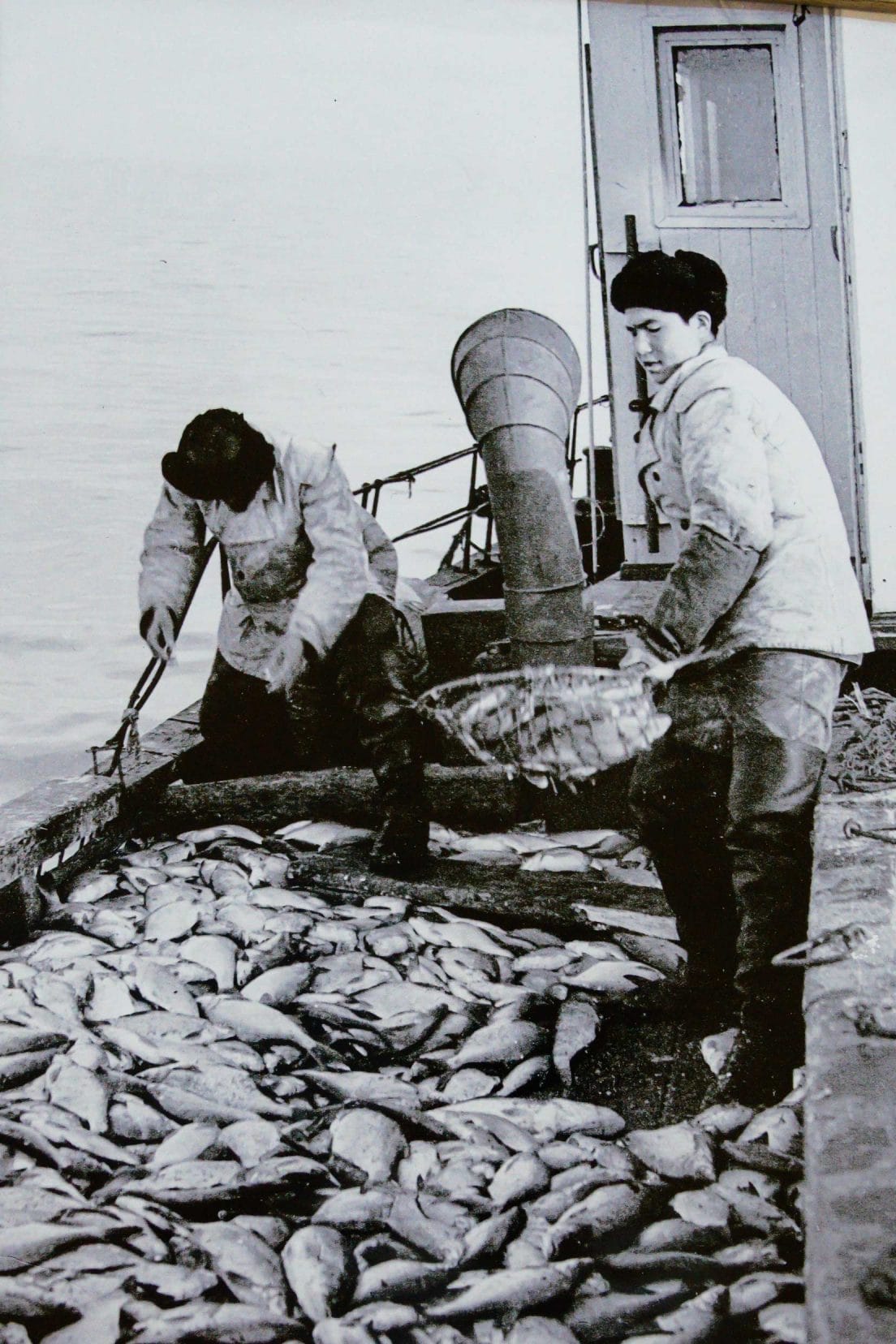

I spent about 40 minutes in the Muynak Museum. The Entrance fee is SOM 30,000 (approx. USD $2.50).
Stop 5: Muynak Aral Sea Monument
The Muynak Aral Sea Monument is 100m from the Muynak Museum and was erected to mark the spot of the original coastline. Looking from here to the horizon confirms there is no water —only sand and scrubby trees.
Would you believe it used to be the fourth-biggest inland sea in the world? So what happened?
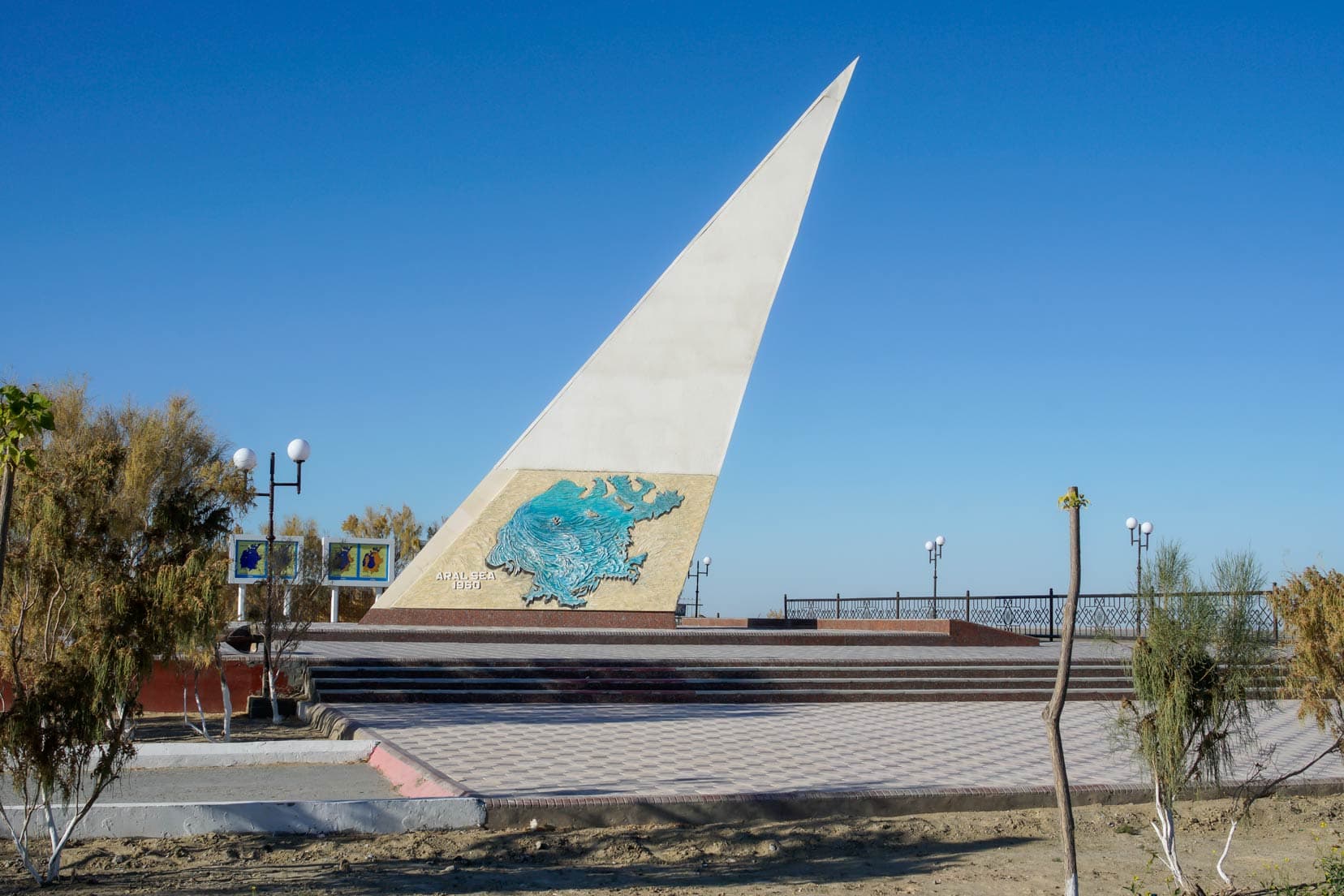
During the time of Soviet Union occupation in the 1960s, a directive was issued to supply irrigation to the nearby cotton fields with water extracted from the Aral Sea. Massive projects were undertaken however, much of this water was lost due to absorption into the sand during the transfer of water from the sea to the fields.
By 1987, the Aral Sea level had dropped nearly 13 metres, shrinking to less than 10% of its original size. This massive loss is one of the planet’s worst environmental disasters.
Here are Nasa images showing the Aral Sea before and after the disaster.
The Aral Sea monument is free to visit.
Stop 6: Aral Sea Ship Graveyard
If you didn’t already feel the plight at the loss of the Aral Sea, gazing down from the Aral Sea monument at the rusted skeletons of the Aral Sea ships drives the point home. A feeling of desolation is almost overwhelming.
There are two locations where the ships are clustered within a few hundred metres of each other.
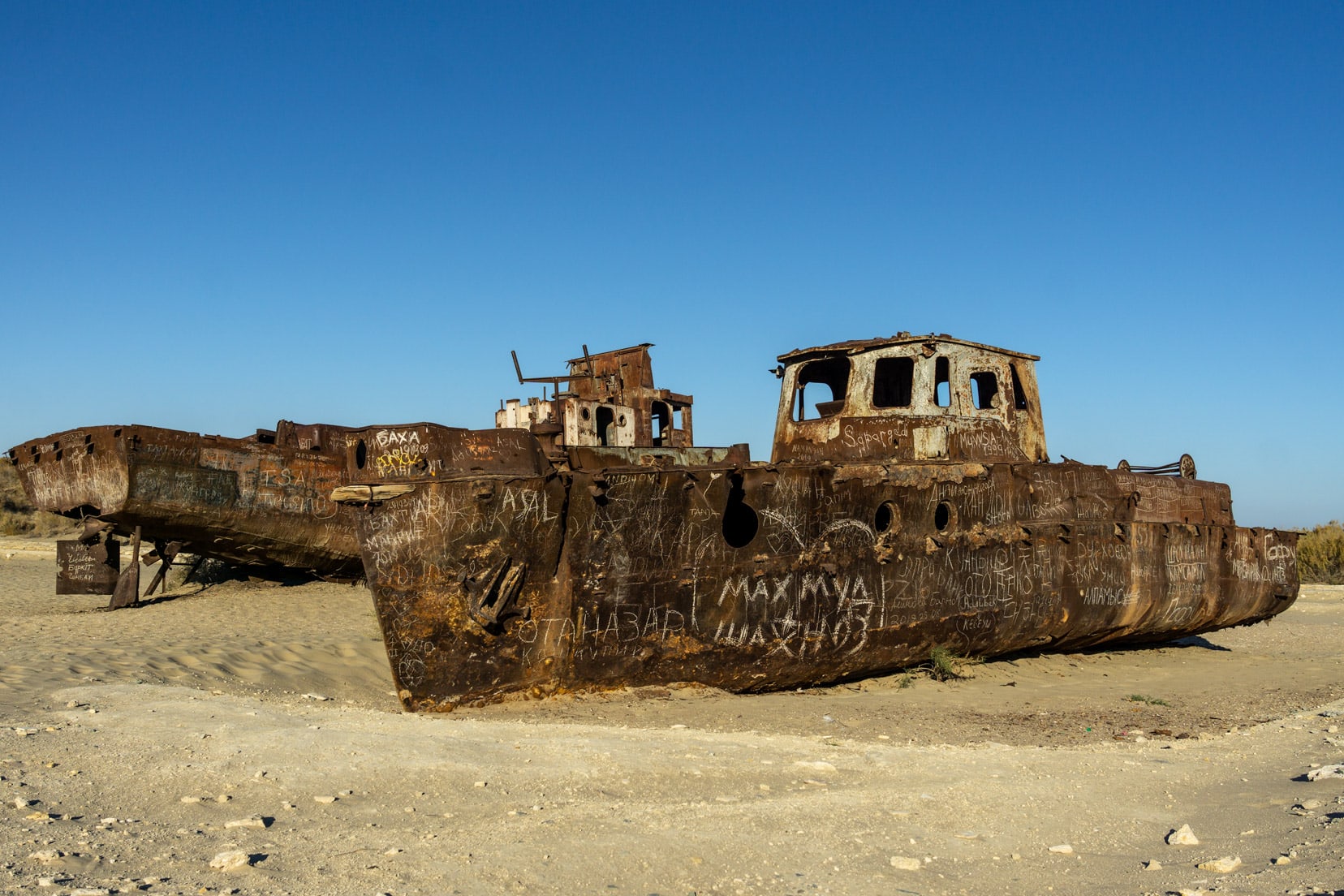
These decaying metal ghosts all face out to what was once the open sea as if longing to return to a past life.
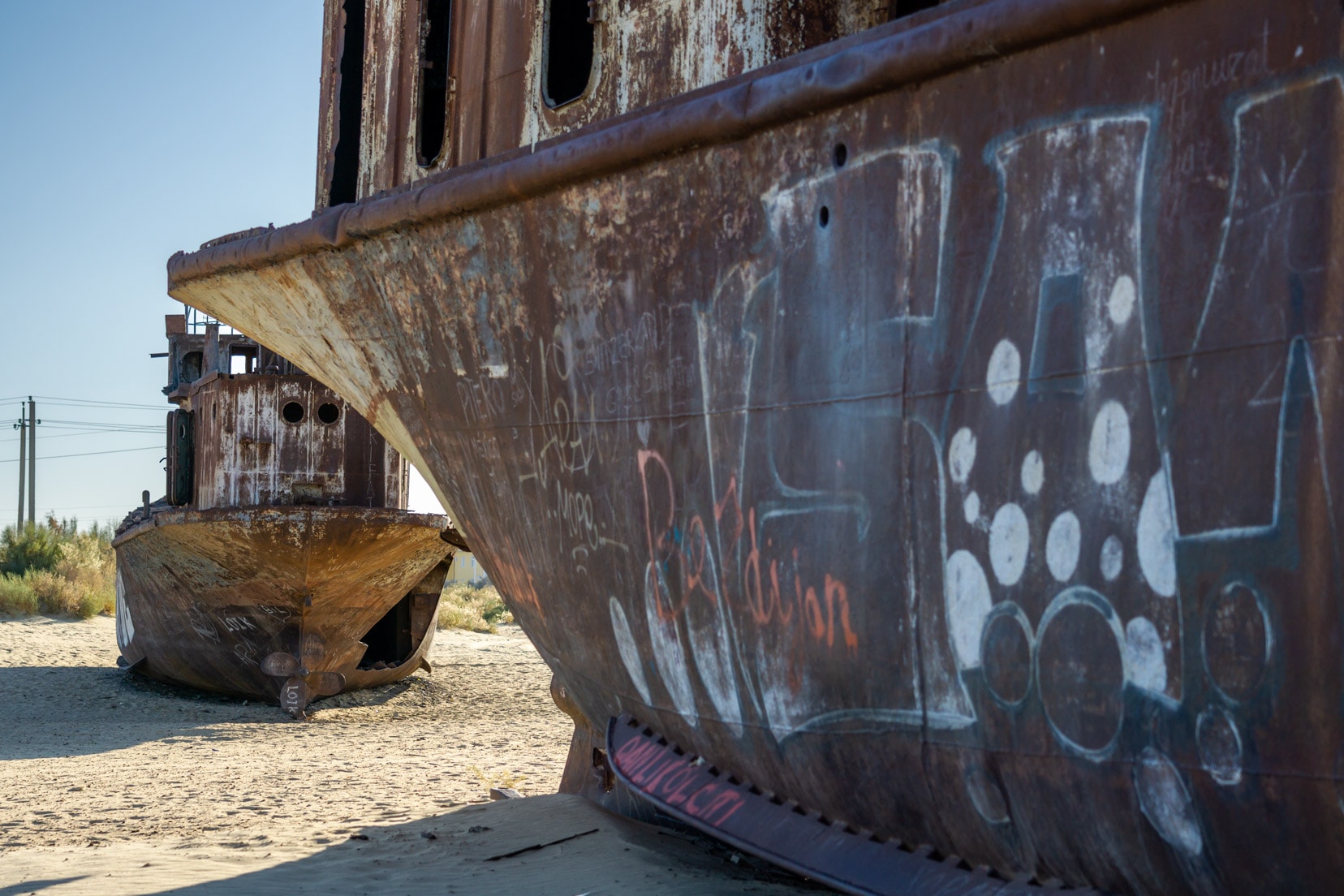
You can clamber onto a couple of these boats using the purpose-built ladders and handrails, providing better views over the sand. Apart from the graffiti and the lack of water, these boats lay as they were left many years ago.
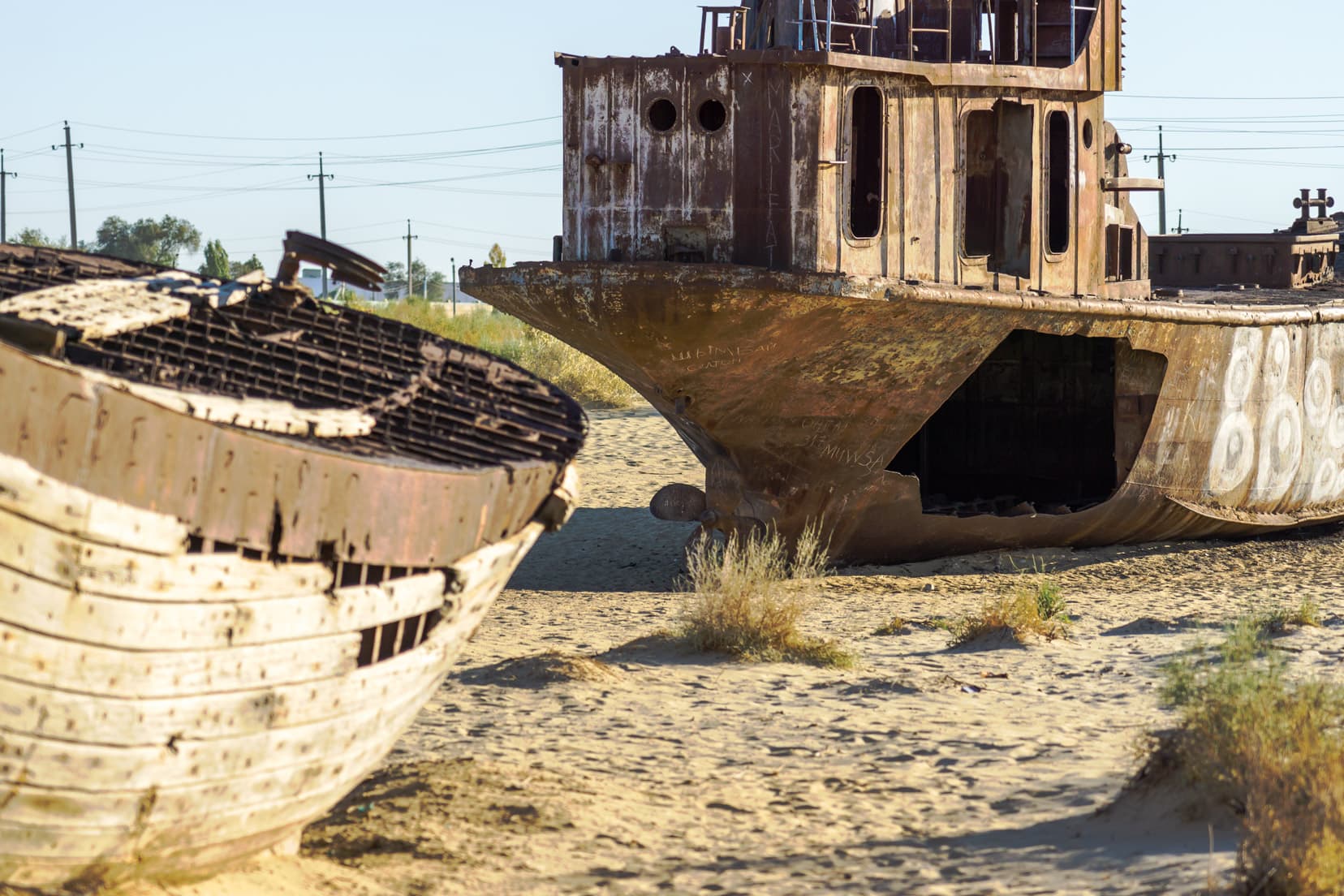
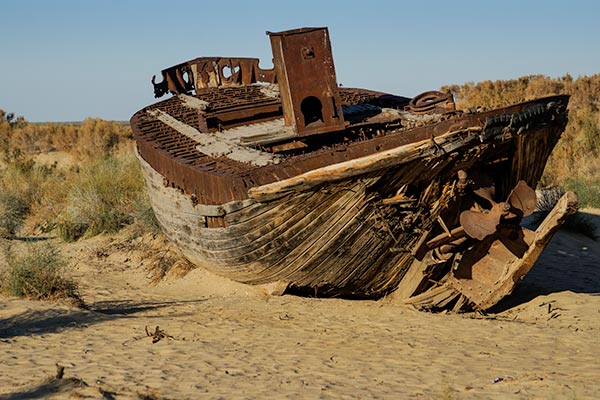
The Aral ships graveyard was easily worth the one and a half hours spent there, and honestly, I could have easily stayed another hour at least.
It is free to enter and walk around the Aral Sea ship graveyard.
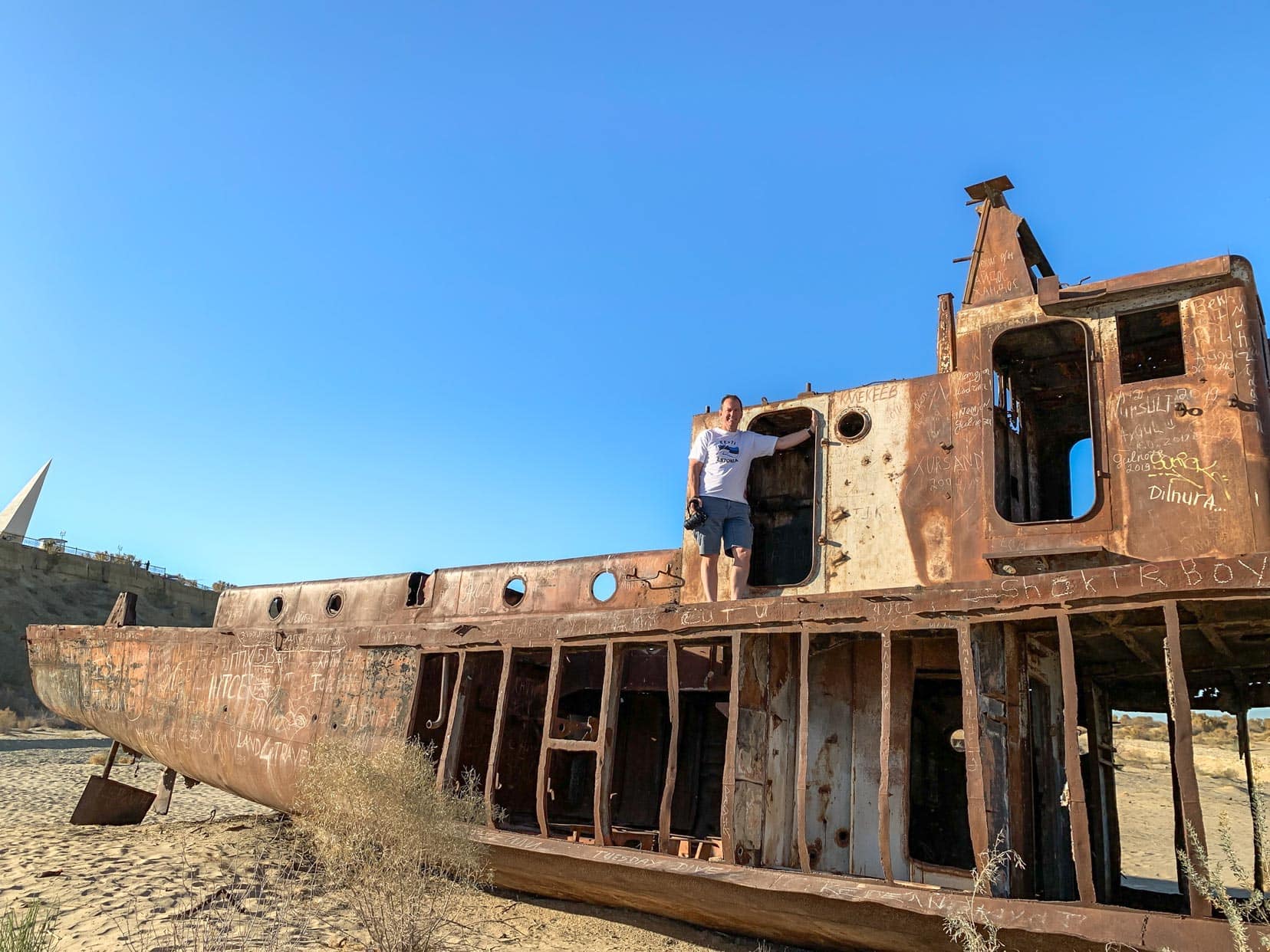
Stop 7: Badai Tugai
Although scheduled as part of the tour, there wasn’t enough time to visit Karalkapakstan’s only nature reserve, located 90 kilometres from Khiva. Leaving Muynak close to sunset, we had run short on time and light.
It’s a shame, as the reserve is known for its forests, rare Bactrian Deer and birdlife.
Homeward Bound on the Khiva to Aral Sea Ships Trip
The drive from the Aral Sea Ship Graveyard to Muynak passes by man-made lakes with golden grassy island pathways and deep blue shallow waters that take on brilliant hues with the setting sun.
A wonderful photo opportunity not to be missed.
Short on photography ideas? Our road trip photography ideas article will get you going.
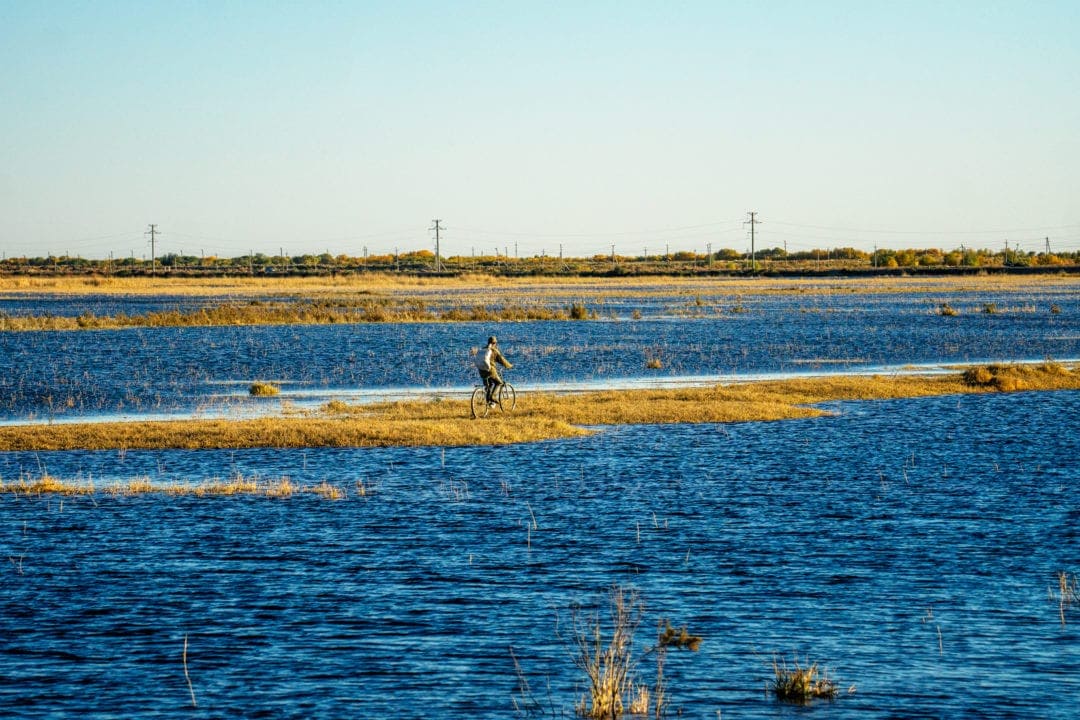
It was a long five-hour drive from Muynak to Khiva, broken only by stops at Metan, a methane re-fuelling station. Here, all passengers disembarked for safety reasons whilst the vehicle is filled.
We arrived in Khiva 16 hours after our early morning departure. It was a big day but filled with wonderful and interesting attractions.
I made some great memories.
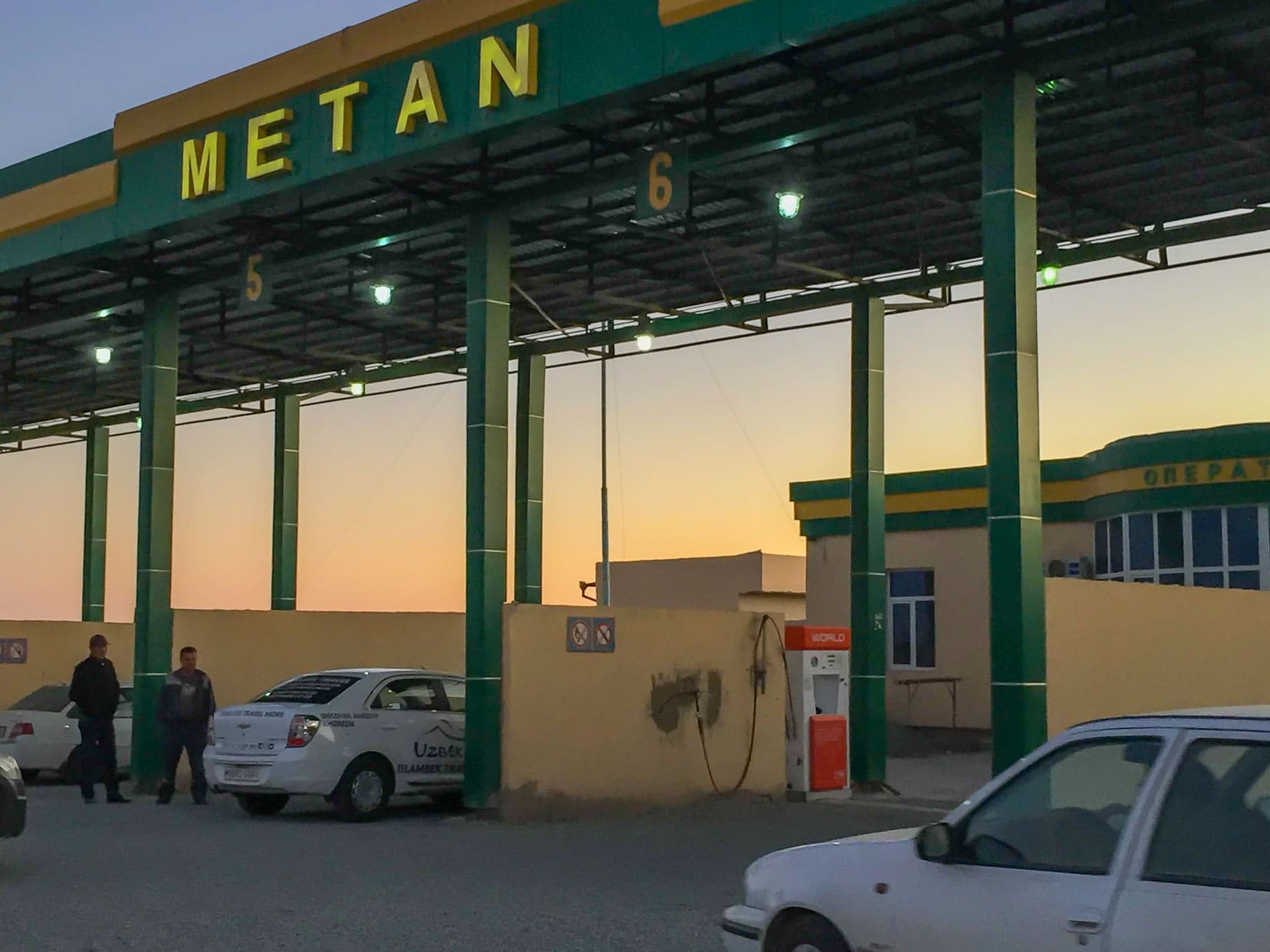
What to Wear During Your Aral Sea Tour
These are the historical temperatures in Karalkapakstan for the different seasons:
- Winter temperatures: 2 degC to -7 degC
- Summer temperature: 35 degC to 20 degC.
These temperatures will govern what you need to pack however, layering is always a winner. During my visit in October, temperatures were chilly, and it definitely warranted wearing long pants and a jacket.
Walking is only way you’ll get to access these attractions so you’ll need good-quality walking shoes. A beanie to keep your ears and head warm would be helpful against the cold, gusting winds in the colder times of the year otherwise, sun protection needs to be used.
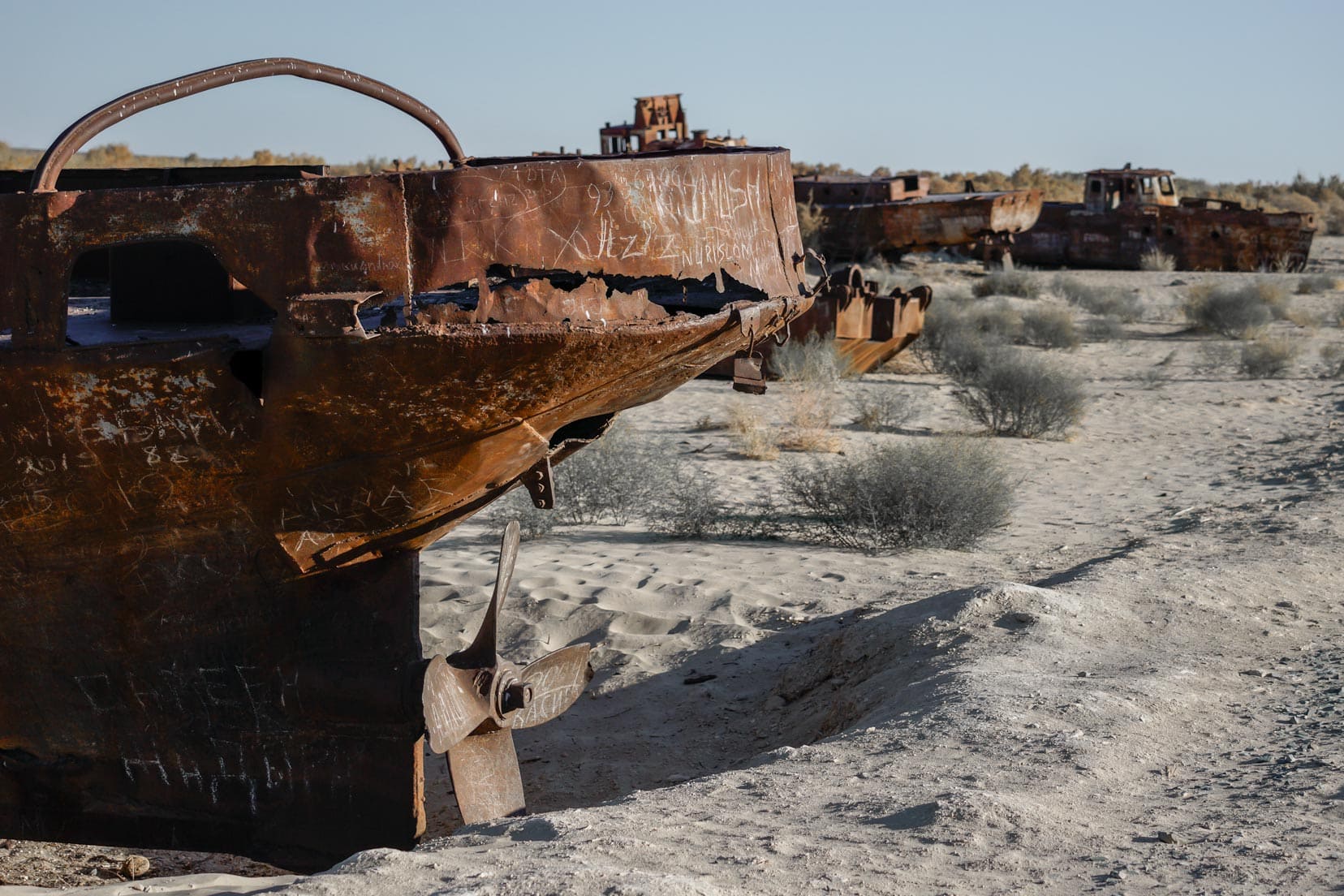
Khiva to Aral Sea Ship Cemetery…That’s a Wrap
This Aral Sea tour from Khiva makes for a fabulous day out. The sheer variety of the attractions and history behind them really make this trip interesting.
Having completed this trip and seeing the beached, rusted and decaying ships firsthand on that wide expanse of near-barren sand gave full meaning to the depth of this catastrophe. A tragedy that had far-reaching consequences and still impacts to this day.
If you’re considering this trip, I can only say, do it. It’s value for money, the attractions are diverse and interesting with the biggest expenditure being only your time.
I trust this post has helped you plan your next adventure. Happy travels.
Have you visited the Muynak ship cemetery on a day trip from Khiva? What were your Aral Sea trip highlights?
Pin and Save for Later
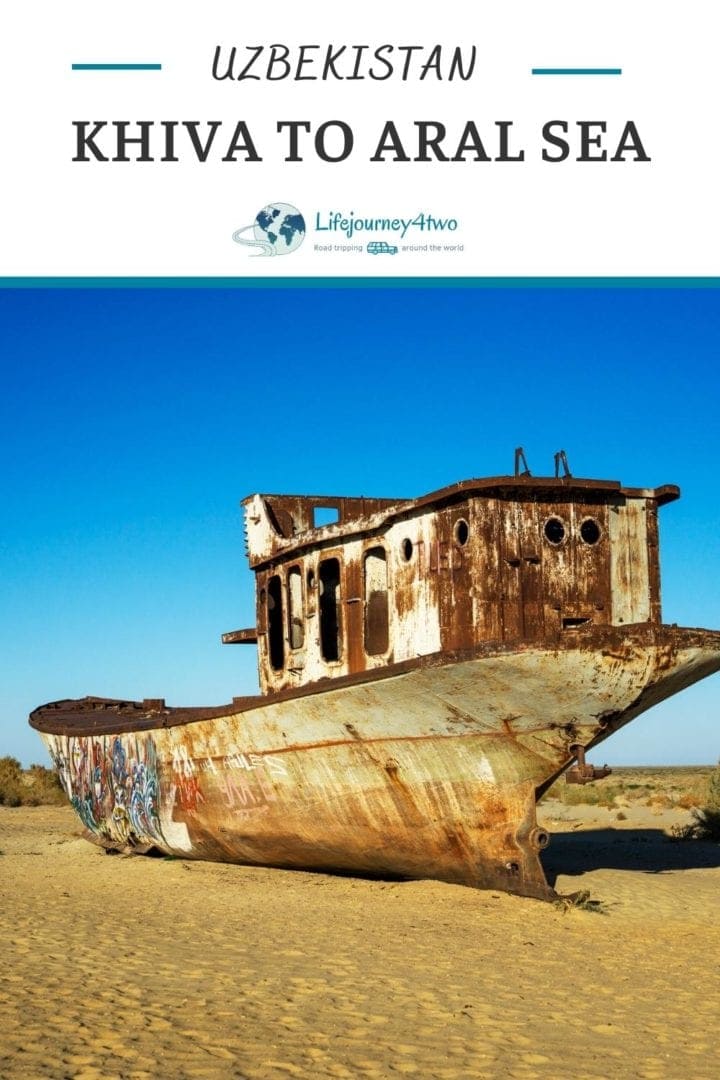
READ MORE
Planning Your Travels?
These are the travel resources we recommend and use when planning our trips.
- 🚘 Car Hire: We use DiscoverCars.com
- Motorhome/Campervan Rental: We highly recommend the Motorhome Republic
- 🪪 Order your International Driver’s Licence online here
- 🛏 Book Accommodation: We use Booking.com to find accommodation that suits our budget
- 🐶 Pet Sitting/Pet Sitters: Check Out TrustedHousesitters here (Use our Discount code: LIFEJOURNEY25 for 25% off. )
- Activities and Experiences: Get Your Guide and Viator
- Travel Insurance: Safetywing or World Nomads
- 🥾 Travel Gear and Accessories: Check out our top picks here — Lifejourney4two page on Amazon
For a more thorough list, visit our Travel Resources page here.

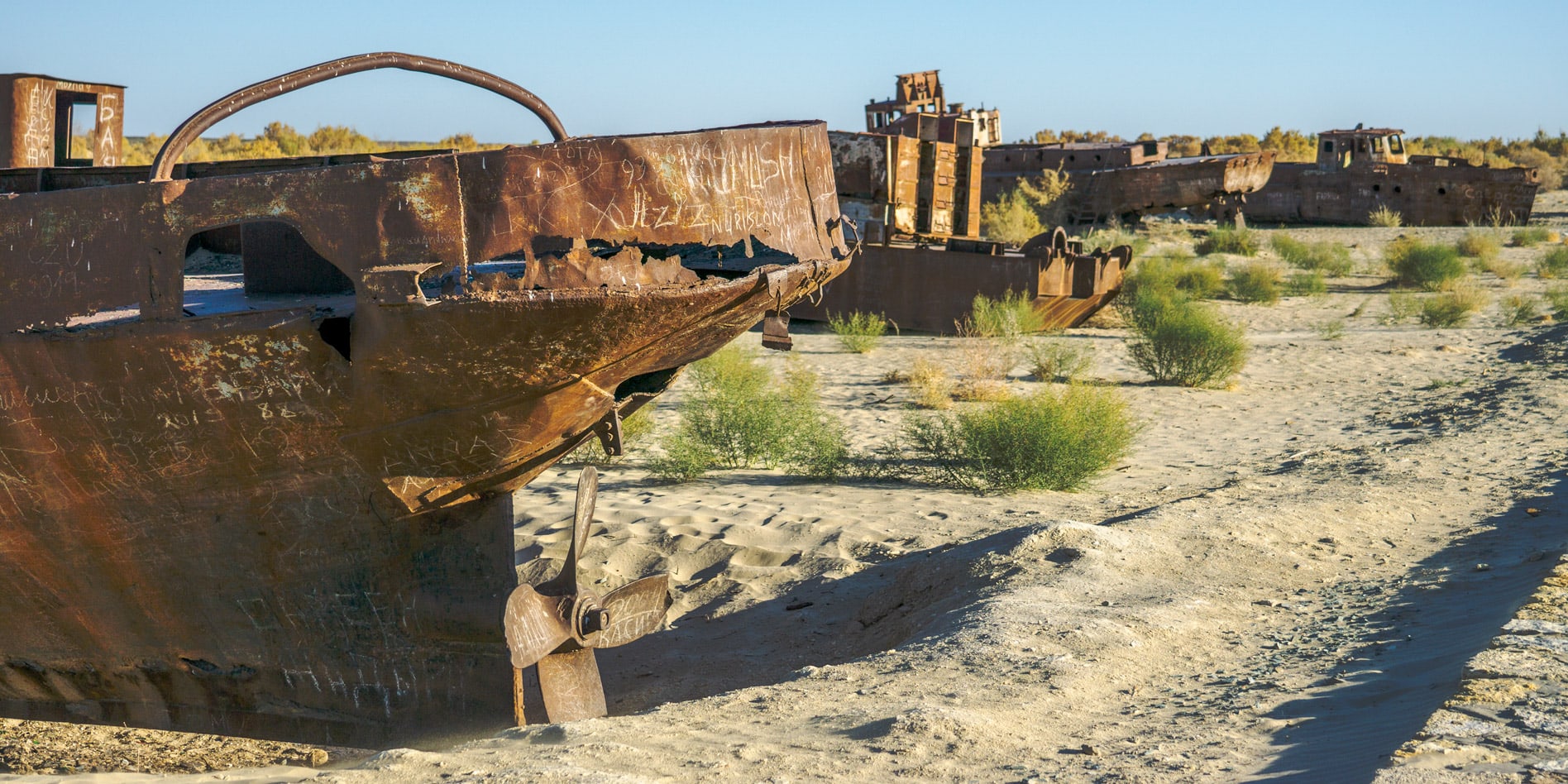
Wow! I so love blogs to unique countries such as Uzbekistan! Hopefully, I can visit Central Asia. Please continue making blogs about unique places here on Earth.
Thanks Mark, hope you get visit Uzbekistan, it is certainly an interesting and intriguing place to travel around.
Hi guys, just fascinating seeing these places that are so unknown to us. What a gem was the interior of the mausoleum.
Thanks Ro – so glad you enjoyed the post – Uzbekistan is certainly an interesting place.
Planning our trip, for next year. If only everyone could post like you do, and the photography is like we are twins. Tks
Hi John, Thanks for the positive feedback and we’re glad that our article helped you out. Looks like we both enjoy spending time behind the lens:)
If you have any further questions then please just ask away and we’ll gladly help out. Enjoy your upcoming trip!
Fascinating post! Thanks!
Thanks, John and Susan – it was a captivating trip – especially seeing the Aral Sea ship cemetery. Thanks so much for stopping by.